Noun 2018
In July 2017 during Caravane Tighmert 2017, the president of the Guelmim province, Ihya Ifrdane, asked us for a meeting. He wanted to meet the artists that had come. At the beginning, I thought he just wanted to take a picture as if he had been the one who had organised or funded the artists gathering, so I refused to come with them. I agreed to come just with Ahmed Dabah as organisers. When we arrived, they insisted to meet some artists because the president wanted to propose us something. One hour later, we came into his office with Laila Hida and Heidi Vogels.
After the introductions, the president admitted they did nothing for culture in the province, they just organised some concerts in Guelmim in summertime. He also agreed the concerts were more about entertainment than culture. He told us he would like to develop culture activities, not only in Guelmim, but overall in the small oases. They had money but they did not know a lot about culture. He had watched what we had been doing these years in Tighmert, and he told us the oasis had become the reference for the province in terms of contemporary culture. For him the situation was clear, he had money but he did not know what to deal with culture, however we had expertise in culture matters but no money. He proposed us to work together, developing culture activities in the Guelmimm oases. What he wanted was a cultural strategy.
We accepted the proposal (and the challenge), although we were a little bit naive because we did not ask for a remuneration. Actually, we were surprised face to this honesty concerning non-culture policy and we committed to deliver a document in October, as he wanted, so they could approve it in the provincial council and implement it in 2018.
1. premises
A cultural strategy it is not just a document with culture activities distributed during the year, it must solve the existent problems in culture matters and it must be developed in a short, medium and long term. We started by asking ourselves a series of questions:
● which culture(s) for the oases of pre-Saharan regions? What about the inhabitants living outside the oases, the nomads, is it possible to integrate them into such a strategy?
● should we encourage tribal culture within each tribe?
● can we dissociate culture from their tribes?
● should all cultures be promoted at the same time and level, keeping their identities?
● is it necessary to rely only on traditional cultures, or is there room for contemporary cultures?
● which artistic disciplines should be promoted?
● is it enough to promote only artistic disciplines, or do we first need to set up a training program?
● are there enough artists in the province with skills to develop training activities in all disciplines?
● are there infrastructures to host the activities in the oases?
● is there room for contemporary creation made by local artists? And by national and international artists?
● how can we manage a cultural strategy without an administrative structure dedicated to culture?
● can we succeed with the support of a single association or should we "federate" the maximum number of cultural and social associations?
2. strategy
The report of the Moroccan Economic, Social and Environmental Council, on "The Economy of Culture" opens with this quote:
"(...) It is important to reserve for culture, in its civilisational sense, the place that should be its, given that it constitutes one of the essential foundations of Our strategic vision to endow Morocco with a constructive cultural project , in a climate of freedom, conducive to creativity, innovation, diversity and positive interaction among cultures at the regional, national and universal levels".
His Majesty King Mohammed VI
Although the territory of the Guelmim province is only part of a vast national territory, they have a huge cultural diversity that is difficult to find elsewhere, especially thanks to tribes. This characteristic is a fortress to develop and to show to all those who do not know the reality of southern provinces. However, we must encourage three other ideas mentioned by His Majesty, which seem to us very relevant in this cultural strategy:
creation/innovation/interaction
Moreover, these notions have been present since the beginning of Caravane Tighmert, making Tighmert a laboratory for contemporary oasian culture, where artists from different regions of Morocco, and abroad, come to do research and contemporary creations based on oases cultures, working with the local population.
Such a proposal is much more manageable in one place, but how should it be done on a territory with thirty oases?
The experience at Tighmert, the collaborations of our members with other festivals, the advice given by artists according to their experiences in their professional practices (teaching, exhibitions, residencies, biennales, festivals ...) allow us to think on this strategy with a broader vision.
This can be established on four objectives:
● to give access to multidisciplinary artistic training to the oases population.
● to develop a cultural network in the province (which will allow a better social cohesion)
● to encourage contemporary creation, based on oasian cultures
● to promote contemporary oasian cultures at the regional, national and international levels.
In order to achieve these objectives, it is necessary to work on several levels, knowing that cultural industry must not be confused with artistic education, creation and cultural promotion, because in an industry, the economic profitability is a key factor, that can exclude manifestations of minority cultures, precisely those which are in danger of disappearing. We believe only public institutions can safeguard minority cultures, especially in remote areas like Guelmim.
Such a strategy needs three basic elements:
● an administrative structure capable of managing its implementation.
● a network of national and international artists, from all possible disciplines, engaged with creation, innovation and interaction.
● a communication and a documentation of all the activities that will be part of a digital, and accessible, archive.
We must also know the specificities of southern regions and their social structures, that is why we can not copy and paste existing programs in Moroccan big cities neither in Europe. There is another difficulty, the lack of a local or regional administration dedicated to cultural affairs.
administration
We initially propose a structure with a chief coordinator and an administrative officer (both with a full-time contract), and two assistants (part-time contract), but once the activities increase over the territory, more staff will have to be hired. It should be remembered the difference between organising events in a city and in an oasis, where resources and technical skills are more limited. It would be advisable to collaborate with associations working on oases to share goals and resources.
culture network
This strategy would not be possible without the support of local, national and international artists (based on the original objectives), because only external visions and contributions, at different levels, can move local cultures forward to contemporaneity. It is the contemporaneity which will safeguard the traditions. However, we know the difficulties to bring specialists to Guelmim from Rabat, Casablanca or Tangier, due to a deficient transport network and their ignorance of the region, its cultures and its potentialities.
In this situation, how can we convince artists to come and work in these oases? Because it's not just about inviting some artistic teachers, we need the best possible artists, with a certain professional trajectory (national and international).
From our experience with Caravane Tighmert, it is possible. We simply have to take advantage of the potential of local cultures to get their attention, allowing them to conduct research and artistic projects in parallel to educational workshops. In the end, it is a question of combining the interests of all, on the one hand the need of the inhabitants of the oases to access to artistic education, on the other, the contemporary creation and finally the promotion of the province and its cultures.
communication
The third component of this strategy is communication. During the first editions of Caravane Tighmert, we had almost no "traditional" media impact. The lack of money did not allow us to invite journalists from national medias and they were not interested in our proposal despite the participation of a group of visual artists well known in contemporary art circles in Morocco. The result was a very limited "traditional" coverage, not to say non-existent. Faced with this problem, we decided to show all the activities on Internet, on our website and on social networks (Facebook, Instagram, Twitter and YouTube), becoming our website a database on Moroccan contemporary creation which, moreover, helps better to understand the possibilities the oases can offer to artists. We think this will be the best way to promote the project, not only in Morocco, but abroad, because the facilities for contemporary creations, can have a huge interest beyond Guelmim province, as statistics from Facebook, Youtube and our website have shown us, with visualisations from more than 60 countries.
3. artists
We have thought about the disciplines that could have a better interest and impact on the oases population. We also took into account the experiences gained after four editions of Caravane Tighmert. We believe that Music, Theatre, Literature, Cinema, Dance and Visual Arts (photography, video, drawing, painting, sculpture, installations, graphic design ...), would be suitable disciplines to be developed in the oases, which will also serve as a means of promoting the different languages spoken in the oases (Arabic, Berber and Hassaniya).
We have contacted a large number of artists, from the region, from the north of the country and from abroad. Most of them have already come to Tighmert, they have done workshops with the inhabitants and they have conducted researches on several aspects of the oases. Others are curious about the project and the possibility of setting up a real cultural strategy in remote regions, deprived of access to culture. It should be noted that most of them are Moroccans, but the participation of foreign artists can be used to promote the cultures of Guelmim outside the country.
Apart from these artists, there will be calls for applications for some projects and events, giving the opportunity to participate to everybody, including young artists who are normally excluded from public cultural projects.
As we have mentioned, the strategy is based on a compatibility between artistic education workshops, artistic research-production, and promotion. So guest artists will have to devote some of their time to workshops with children, young people and/or women from the oases. Another important part will be to study and research subjects related to the oases, its cultures, its traditions, its stories, its tangible and intangible heritage... And if this research leads to a production, it will be great, but we should focus on workshops and researches and not just in production. This is a point important enough to do not fall on the same mistakes most art galleries and artist residences do, where the importance of their activities reside on an object to sell or to show, preventing In-depth reflections, very necessary especially when we talk about oasian cultures, where it is easy to finish doing superficial artistic proposals. This requires time, a lot of time, and support, from the organisers and especially from the inhabitants.
For these reasons we have proposed artists to come a week, three times a year, which will give them time to properly process the information acquired during each stay. There may be cases where artists will need more time and they will not be able to produce a work at the end, but we insist that production is not the goal of this strategy, rather education, research and promotion.
The artists will be distributed among the selected oases (15 in total). On each stay, the artists will be accompanied by two members of the organisation. For those who live in the region, we considered as transport collective taxis, for those from Marrakech, they will come by bus, for the residents in Casablanca or further north (including Europe), it will be by plane.
These are the artists already engaged:
● theatre: Fatima-Zohra Lahouitar, Ismail Adardour, Claudia Triozzi
● cinema: Marion Lécrivain, Jake Wiener
● visual arts: Gilles Aubry, Mohamed Arejdal, Ramia Beladel, M'barek Bouhchichi, Laila Hida, Rachid Ouhnni, Younès Rahmoun, Abdeljalil Saouli, Heidi Vogels.
● graphic design: Youssef Ousaid, Maha Mouidine
● music: Mourad Belouadi, Hassan Souissi, Ali Souissi
● contemporary dance: Meryem Jazouli, Amar Al-Bojrad
● literature: Abdelatif Essasi, Noureddine Ezarraf
As it has been said, there are will be call for projets, so others artists will be able to participate. The ones mentioned have already come to Tighmert, and we need their experience in the region to initiate the strategy. We need to combined local artists with artists from abroad that already known the region, plus artists that know nothing about the oases.
4. oases
We located 29 oases (or villages) in the province and ranked them by size. For this first year, we will offer activities in just 15. Once we have established a network with the associations that are already working on site, we will be able to do activities in the smaller ones. In any case, the definitive list will be validated with the authorities, depending on the singularities of each village, not just the size.
LARGE OASES (10)
Tighmert*, Tagante*, Bouizakarne*, Timoulay*, Amsra*, Ifrane Atlas Seghir*, Aday*, Tainzert*, Taghjijt*, Tagmout*
MEDIUM OASES (9)
Asrir*, Fask*, Amtoudi*, Ait Illoul*, Laqsabi Tagoust*, Targa Wassay, Iguissel, Ouaoutelt, Aferkat
SMALL OASES (10)
Timoulay, N’ouamalougt, Tagoujalte, Kasbah Ait Moussa, Ouaaroun, Abbouda, Abaynou, Tiglit, El Abiar, Aouint Ighoumane
* oases with scheduled activities
You can find all the oasis on this Google Maps plan:
5. events
Once the artists have chosen an oasis to work and after a first reflection on their research subject, we could have a clearer idea about the artistic proposals and the calendar, because it can happen that artists decide to collaborate together on the same creation, even though they come from different disciplines. The process should be documented by the artist himself or by the coordinator's assistants.
The production budget will be very limited because we think it is better to work with local materials and techniques, nevertheless we have planned some money for the production of art pieces, including a fanzine that could be itself a piece of art made by artists and locals (translated into several languages). We also estimated the elaboration and printing of a book that collects all the work done by artists throughout the year 2018.
Qafila Thalitha
It is a collective artistic project that will pay homage to nomads and the history of the region. A caravan composed by artists would go by walk (with the help of camels and camel drivers) from Asrir to Amtoudi. 7 days walking and 110 km with stops in the following oases:
Asrir / Fask / Kasbah Ait Moussa / Taghjijt / Tainzert / Aday / Amtoudi
This project would be integrated in another one larger that Marsad Drâa develops since 2016, PROJECT QAFILA. It began as a desire to know more about the history of trans-Saharan caravans. Now it has become an international and transdisciplinary research open group (Amado Alfadni, from Sudan, Olì Bonzanigo and Eleonora Castagnone from Italy, M'barek Bouhchichi from Morocco, Pau Cata and Carlos Perez from Spain and finally Heidi Vogels from the Netherlands), based on real experience (that of traveling following the old caravan routes in Morocco) and documents collected by the researchers in their countries.
In 2016, it was Qafila Oula, a two weeks and 300 km journey between Rissani (former Sijilmasa) and M'hamid El Ghizlane, connecting two of the three Saharan ports (the third one was Noul Lamta, near Tighmert). Organised by Marsad Drâa and Café Tissardmine.
In 2017, it was Beyond Qafila Thania, a 180 km and 10 days journey between M'hamid El Ghizlane and Tissint. Organised by Marsad Drâa and CeRCCa through Project Qafila and Platform Harakat in the framework of Kibrit. With the participation of Amado Alfadni, M'barek Bouhchichi, Pau Cata, Carlos Perez and Heidi Vogels (caravan leader, Said Razgui).
Qafila Thalitha would be the third stage in this ongoing research. Artists from different disciplines will have the opportunity to experience a caravan, they will document the journey and they will develop workshops and performances in each oasis during their journey.
Caravane Tighmert
The fourth edition would be integrated in the program of the cultural strategy and it would be an artists gathering, showing the progress of their work in public. An evening would be dedicated completely to the music with the participation of groups from the province. The scheduled date would be from the 7th to the 15th April 2018.
outdoor air cinema
As a complement to cultural activities, we would like to bring big screen cinema to the oases, with 15 screenings during summer nights in public spaces (with free access). In partnership with Moroccan Cinematographic Centre.
African music festival
To remember the importance of caravans as means of communication and cultural exchange in the history of Morocco, and more specifically in the province of Guelmim, we propose a musical event with musicians from Morocco, Mali and Mauritania, to be held in August in the oasis of Ifrane Atlas Seghir.
collective exhibition NOUN 2019
At the end of the year, we will study the possibility of making a traveling exhibit that would be shown in the oases but also in big cities like Marrakesh, Casablanca, Rabat and Tangier, if authorities agreed to fund it. An exhibition that could be accompanied by round tables on oasian culture, social development, heritage, artistic education... based on the experience of all participants in this cultural strategy.
6. program
Without knowing yet the availability of the artists and the choice of the oasis to work, here is a possible distribution of activities during a year:
January: 1 music concert type 1 / 1 music concert type 2 / 8 workshops
February: 1 music concert type 1 / 1 music concert type 2 / 8 workshops / 1 street theatre performance
March: 1 music concert type 1 / 1 music concert type 2 / 8 workshops / 1 street theatre performance
April: 1 music concert type 1 / 2 music concerts type 2 / 10 workshops / 1 street theatre performance / Caravane Tighmert
May: 1 music concert type 1 / 2 music concerts type 2 / 5 workshops / 1 street theatre performance
June: 1 music concert type 1 / 2 music concerts type 2 / 5 workshops / 1 street theatre performance / 3 outdoor cinema screening
July: 1 music concert type 1 / 1 music concerts type 2 / 6 workshops / 1 street theatre performance / 5 outdoor cinema screening
August: 1 music concert type 1 / 1 music concerts type 2 / 6 workshops / 1 street theatre performance / 5 outdoor cinema screening / African Music Festival
September: 1 music concert type 1 / 1 music concerts type 2 / 8 workshops / 1 street theatre performance / 2 outdoor cinema screening
October: 1 music concert type 1 / 1 music concerts type 2 / 8 workshops / 1 street theatre performance / Qafila Thalitha
November: 1 music concert type 1 / 1 music concerts type 2 / 8 workshops / 1 street theatre performance
December: 1 music concert type 1 / 1 music concerts type 2 / 8 workshops / 1 street theatre performance
7. budget
This is the budget summary (a detailed one is included on the document you will find at the end).
You can read (in French) the document on this gallery or download it on this link:

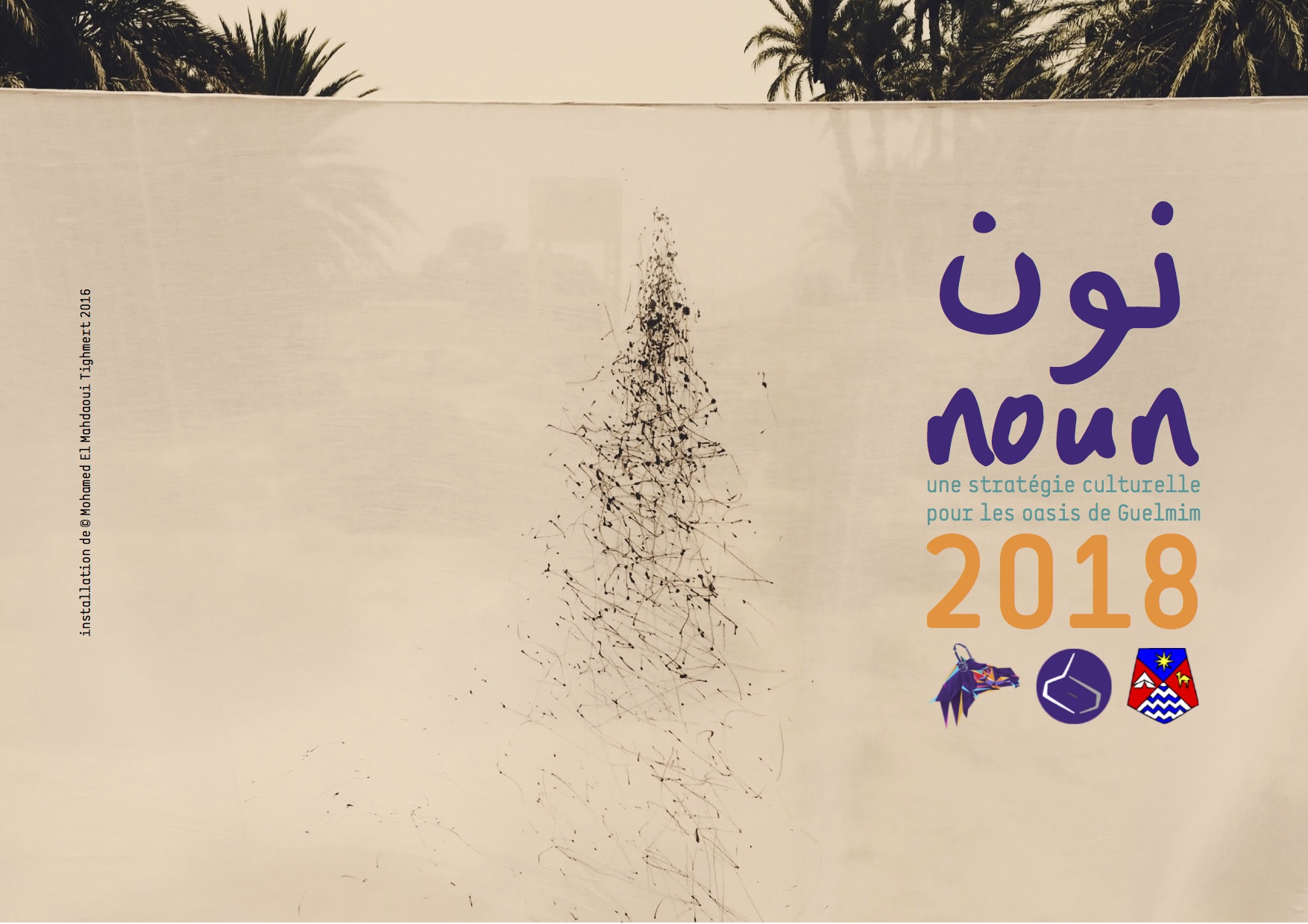
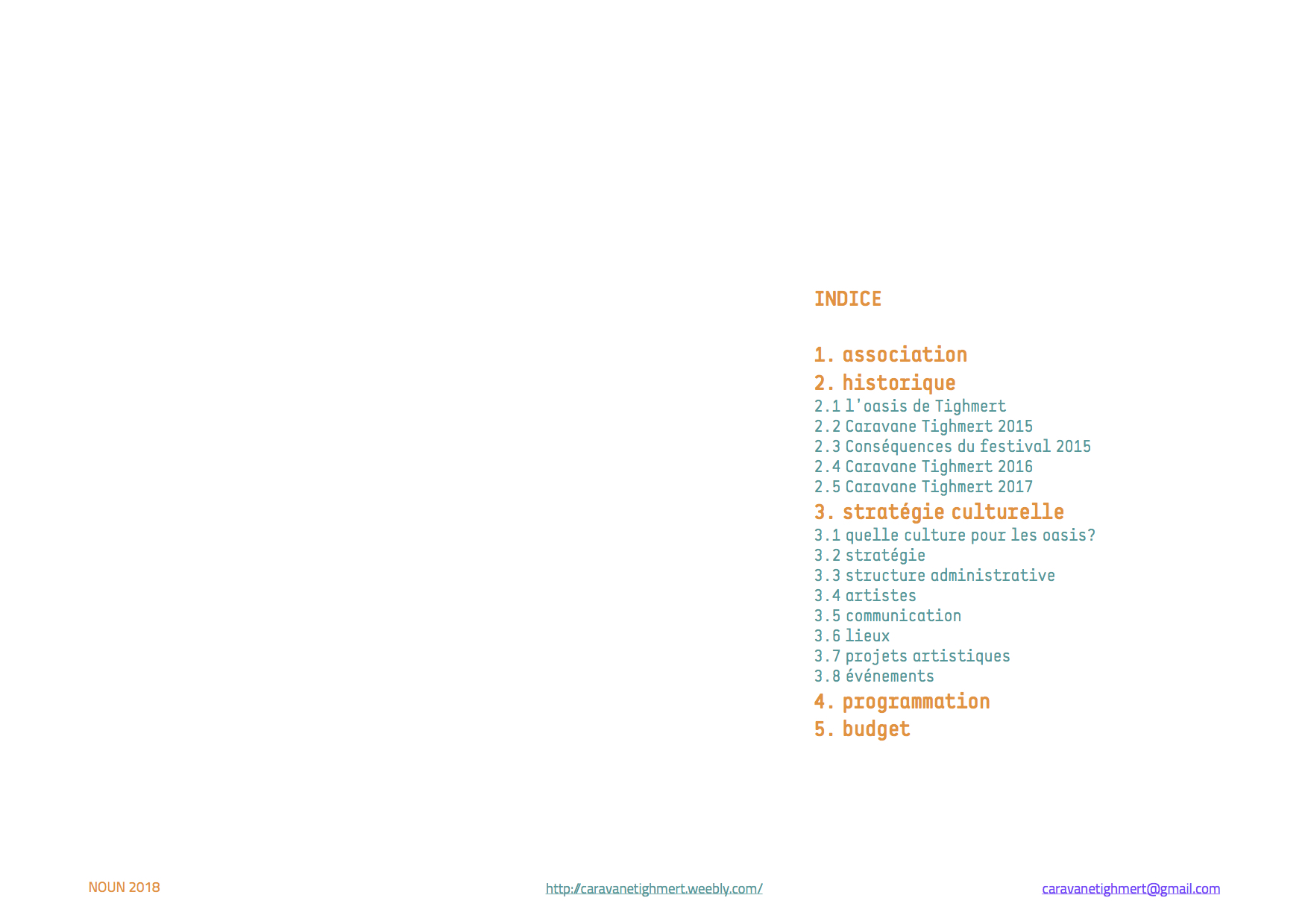
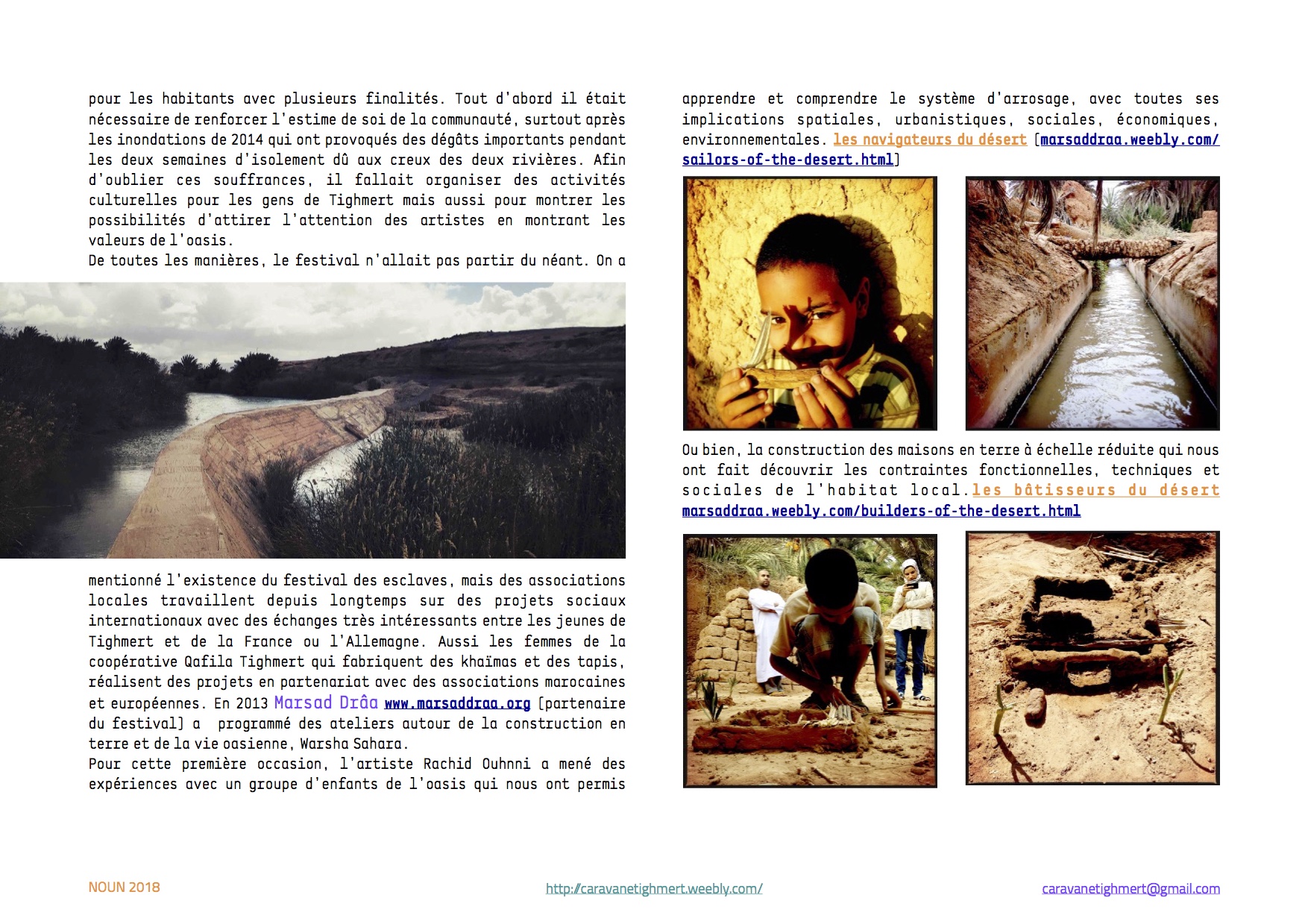
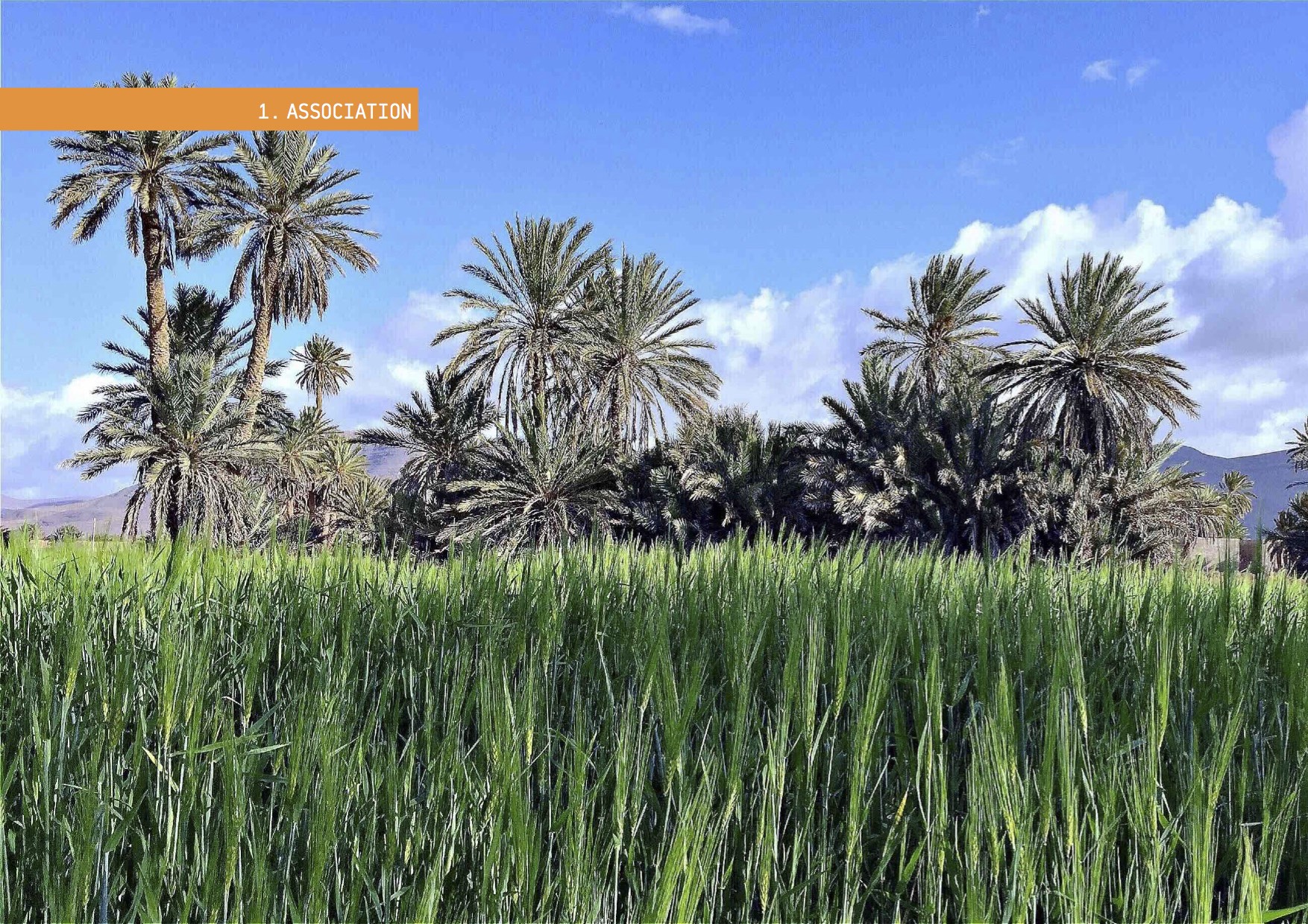
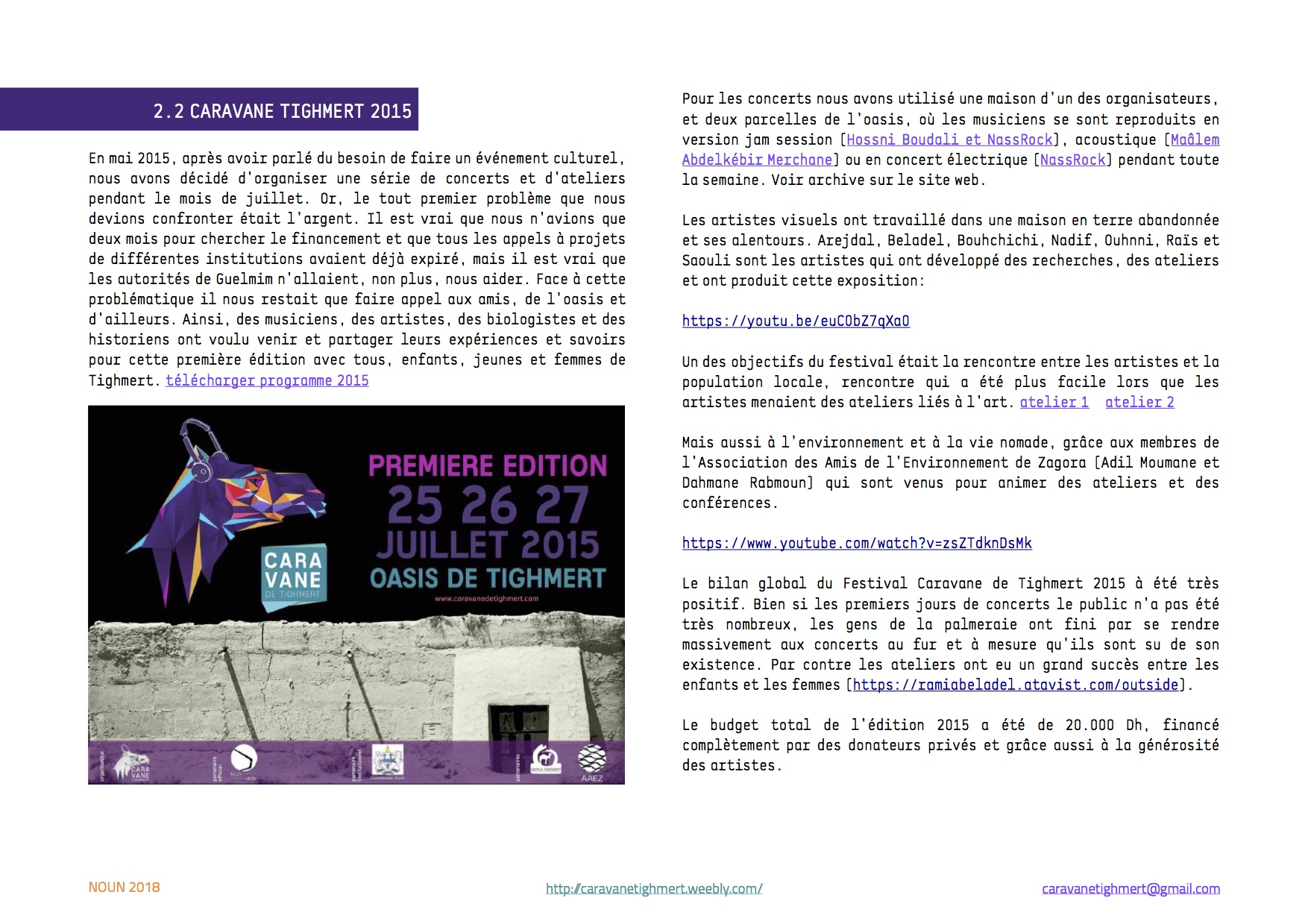
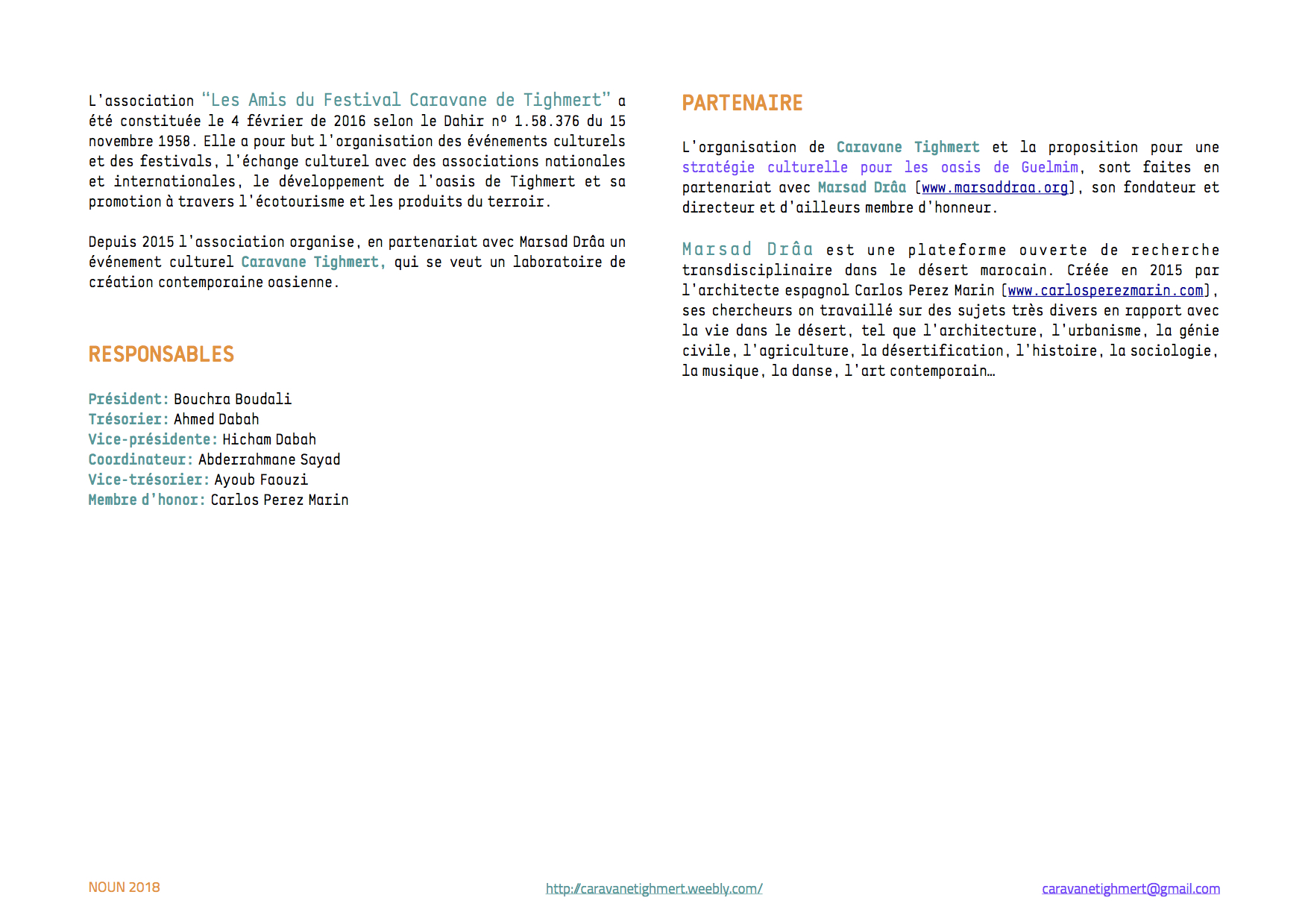
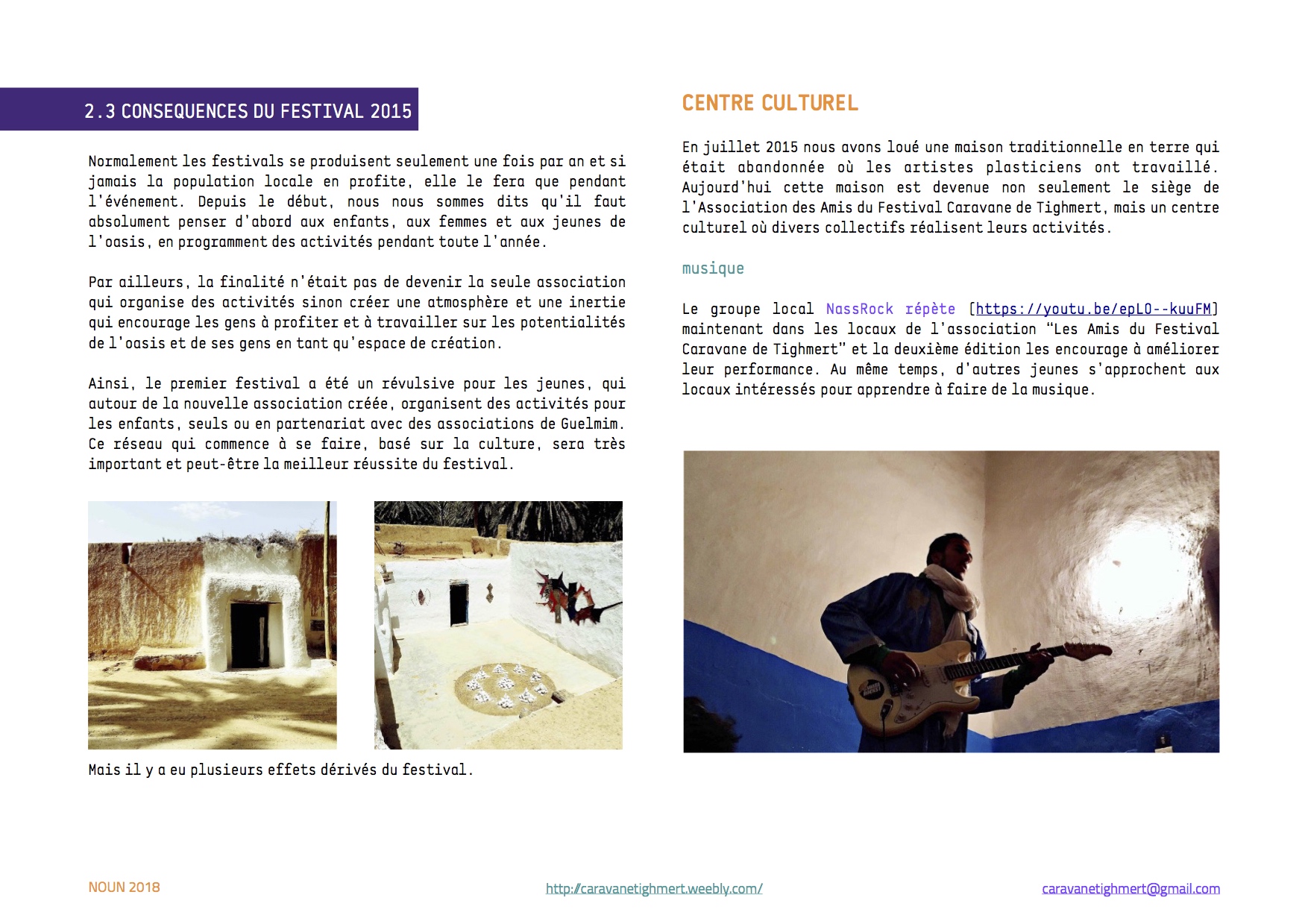
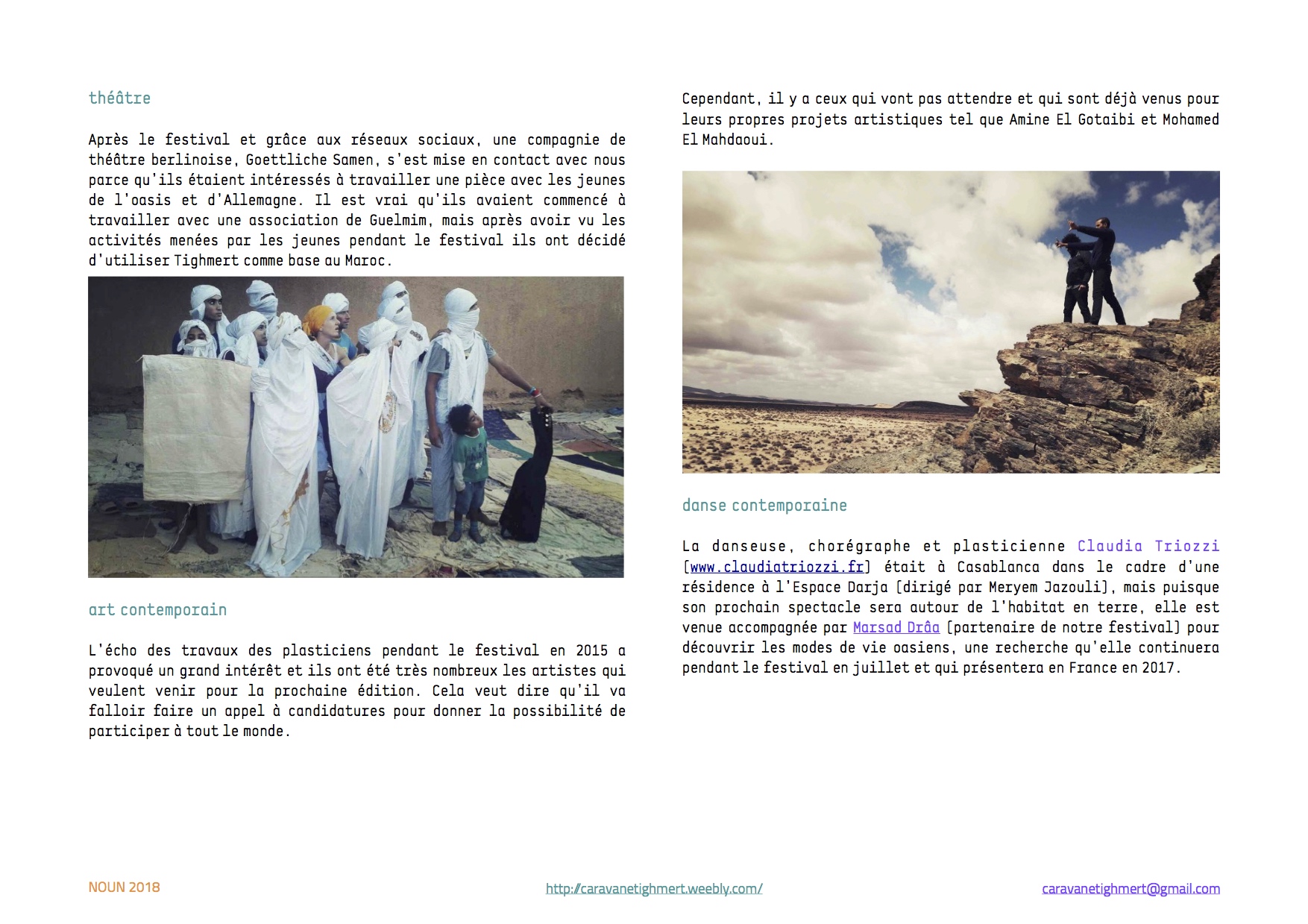
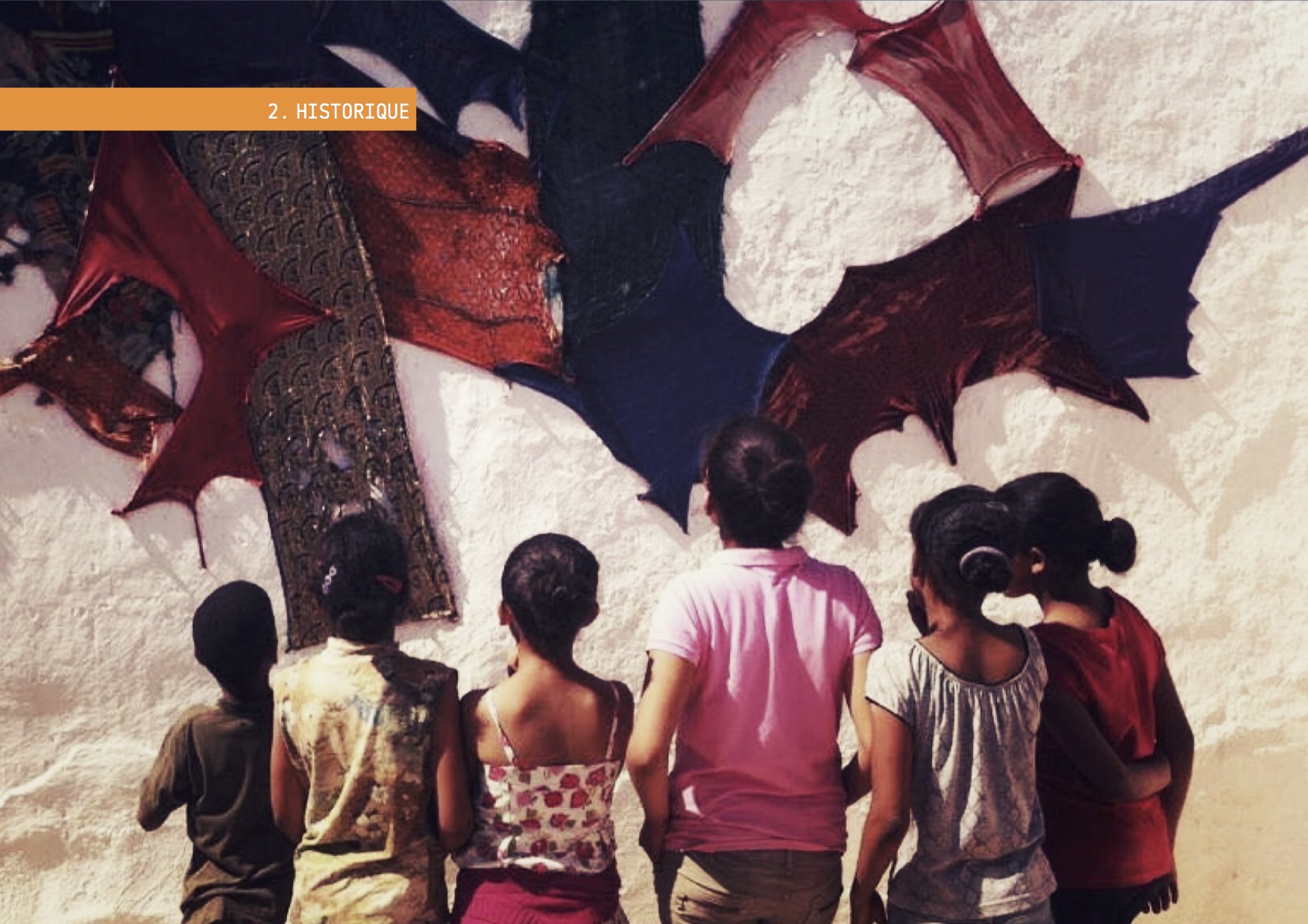
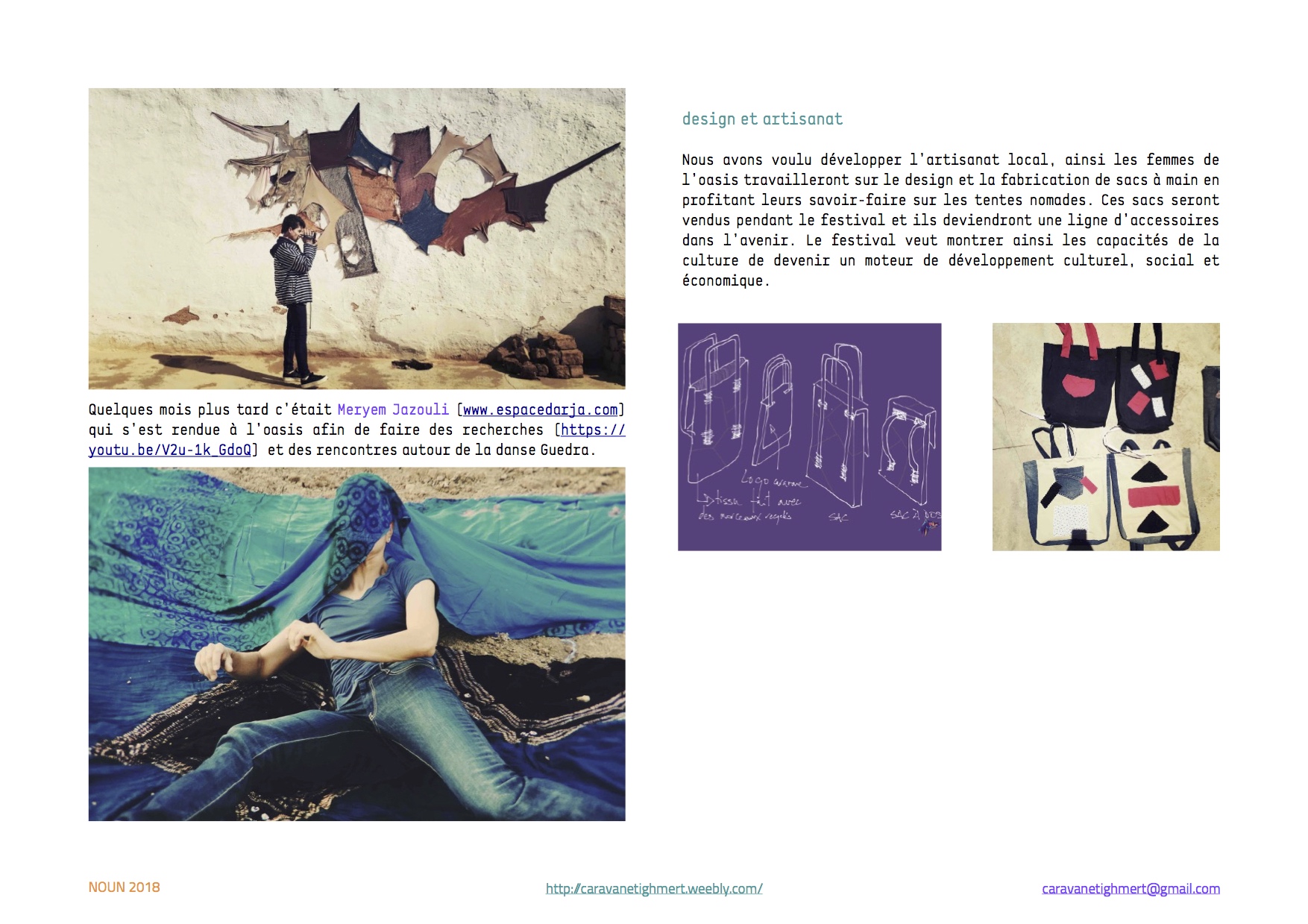

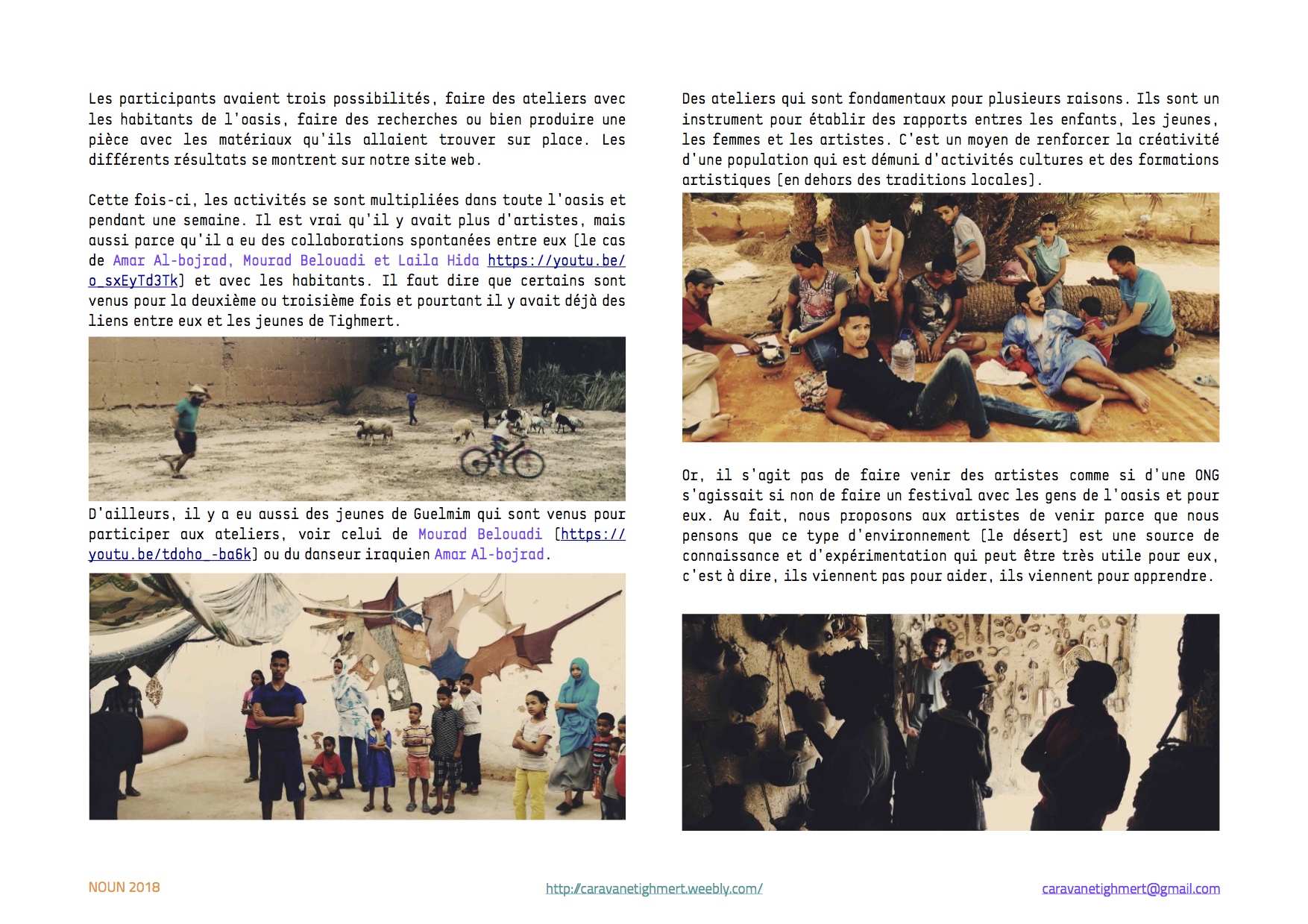
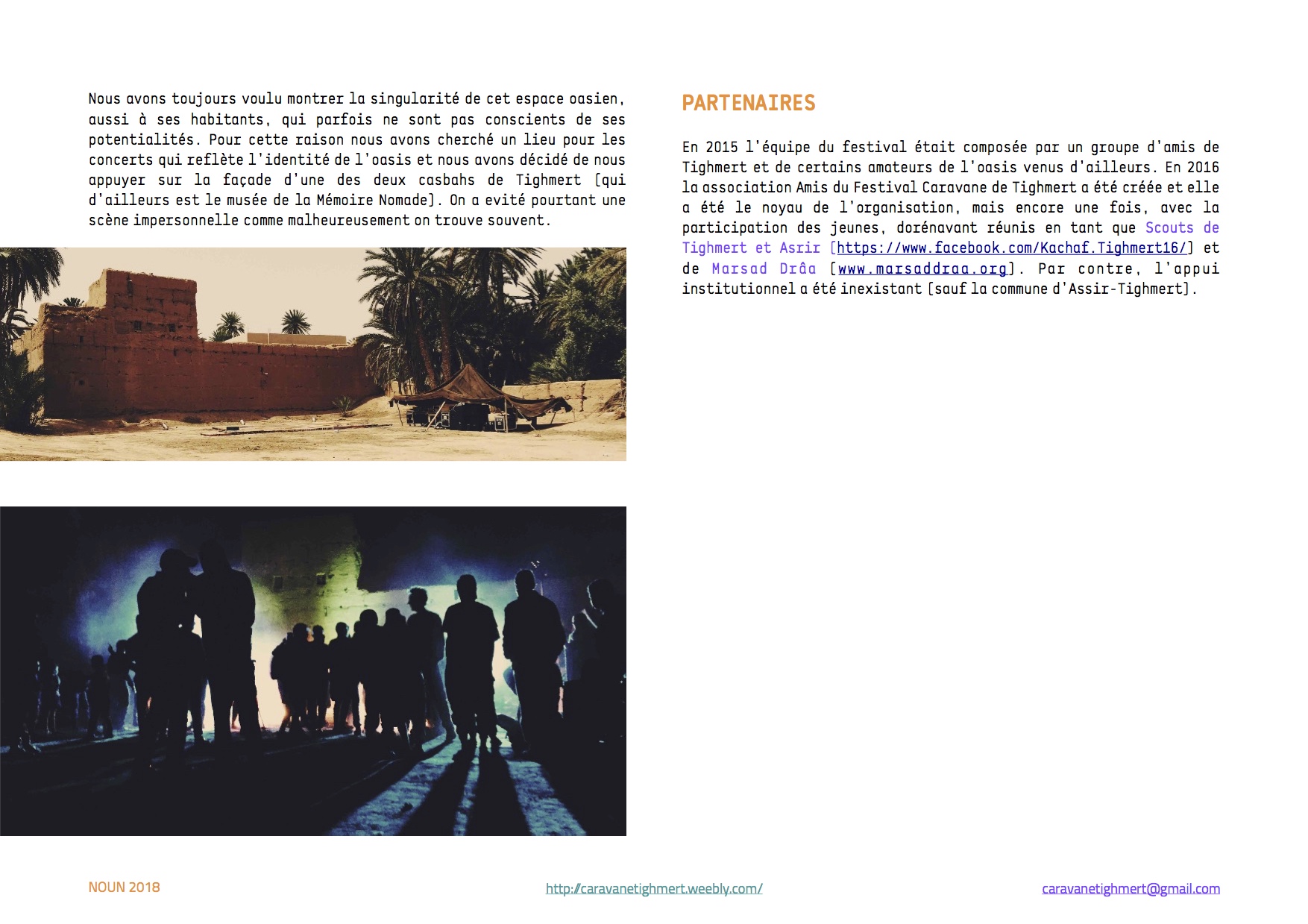
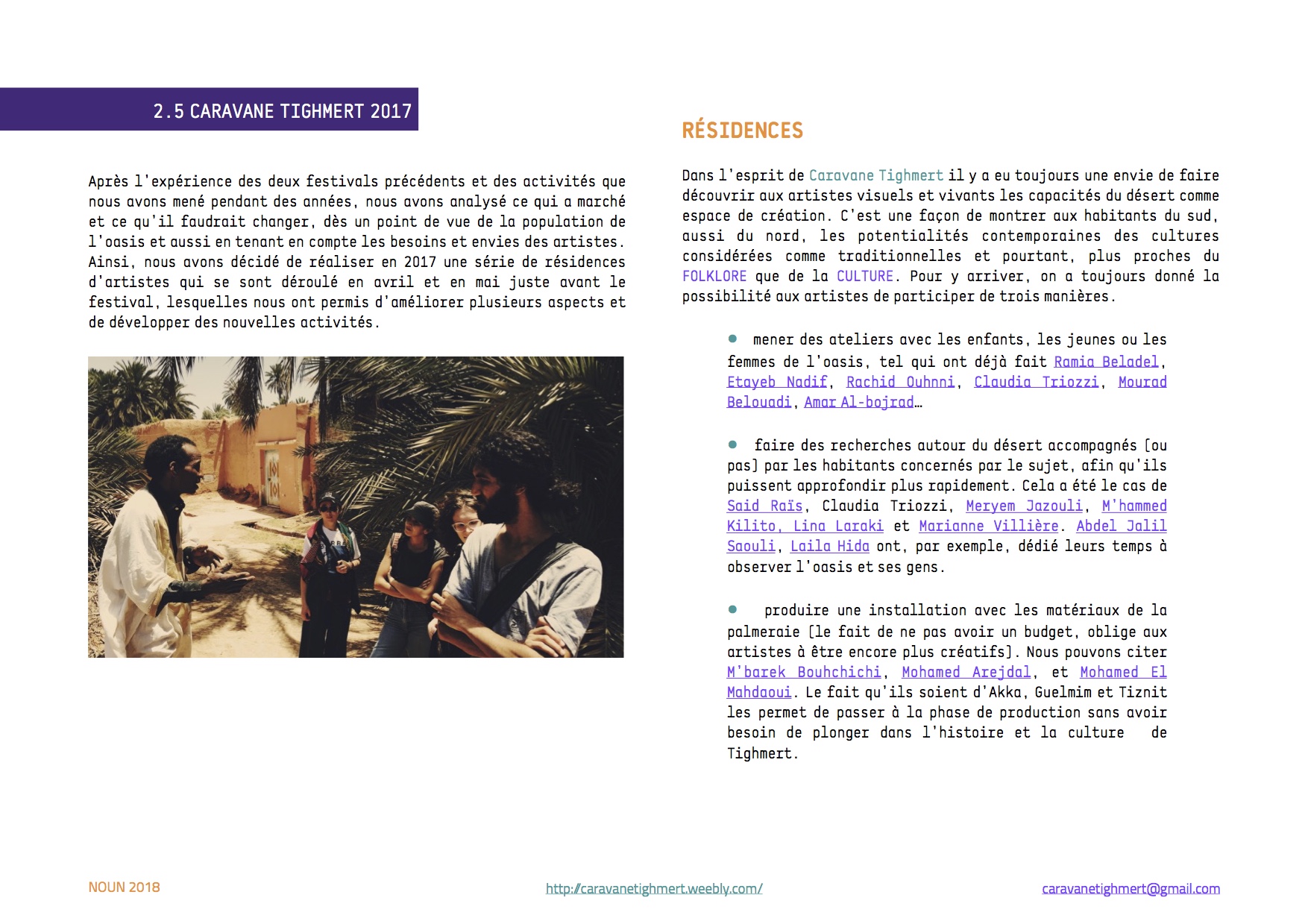
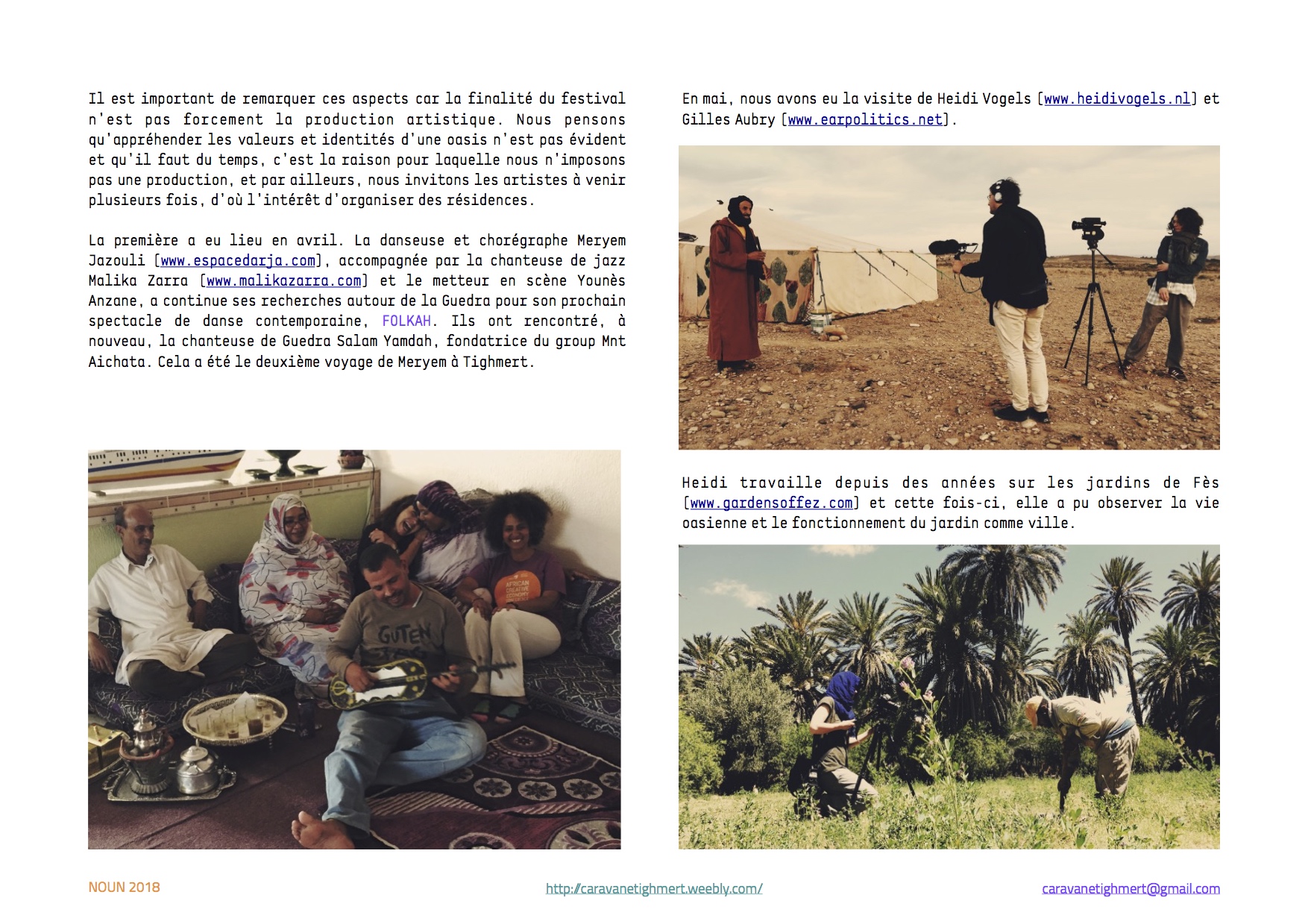
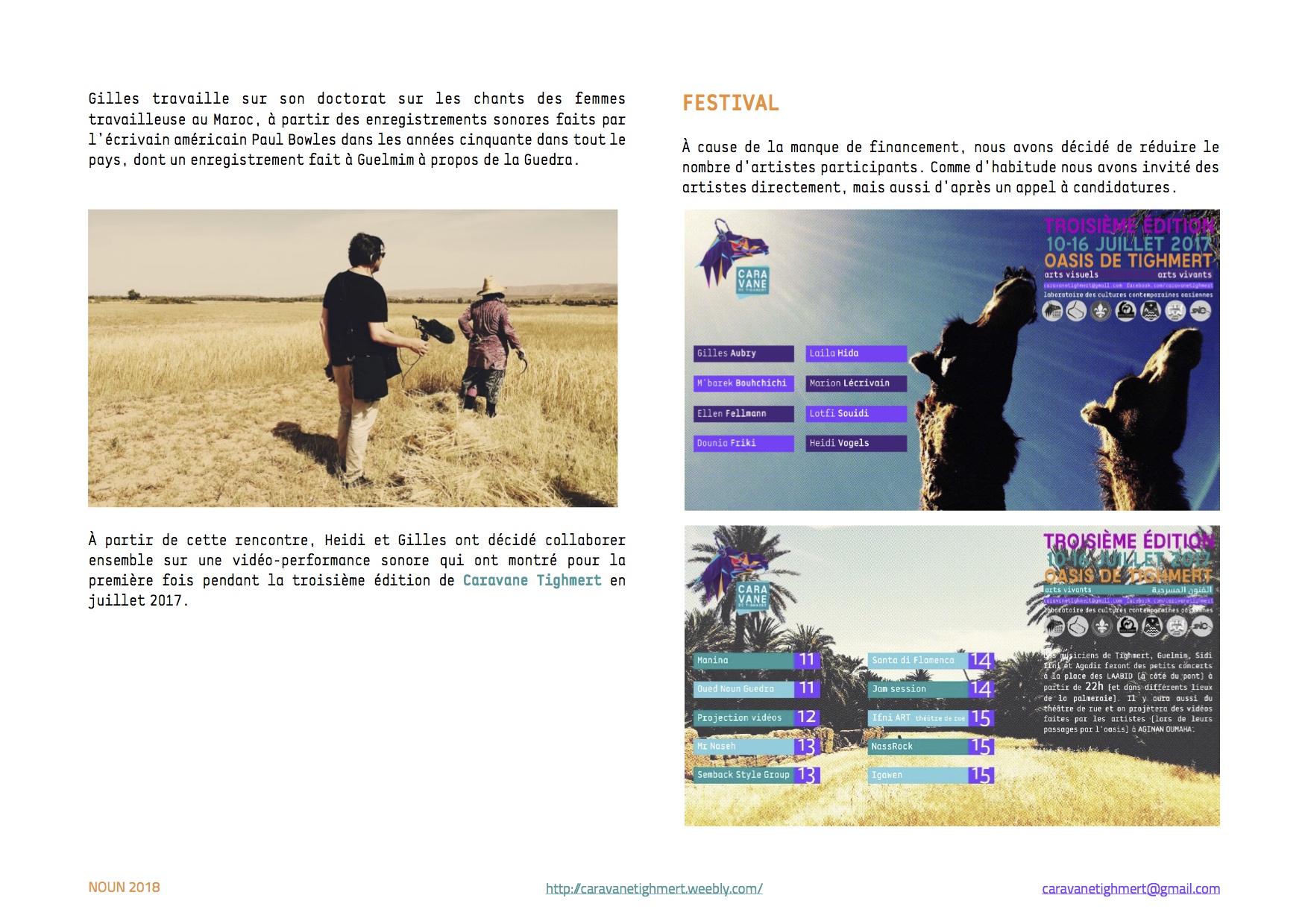
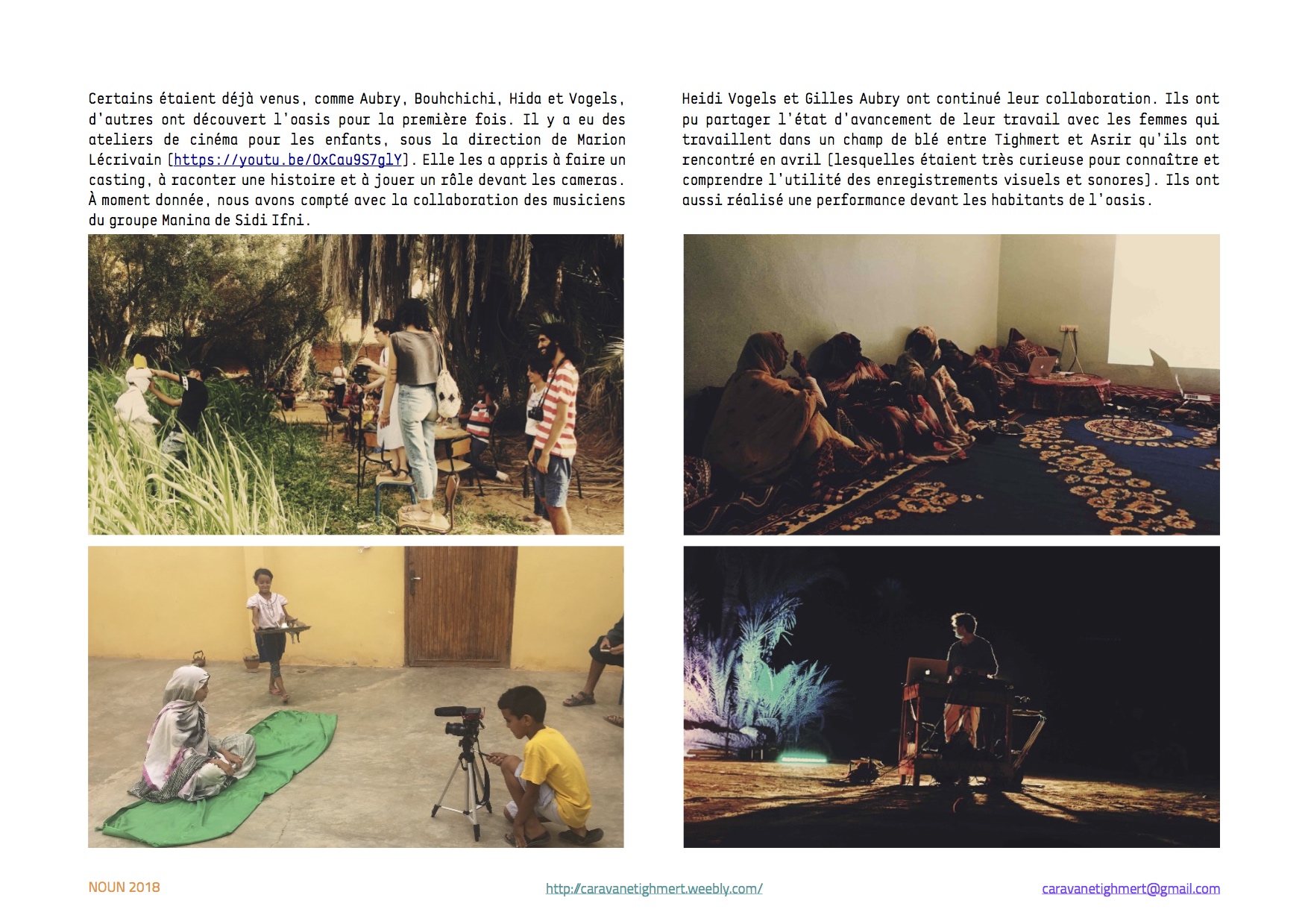

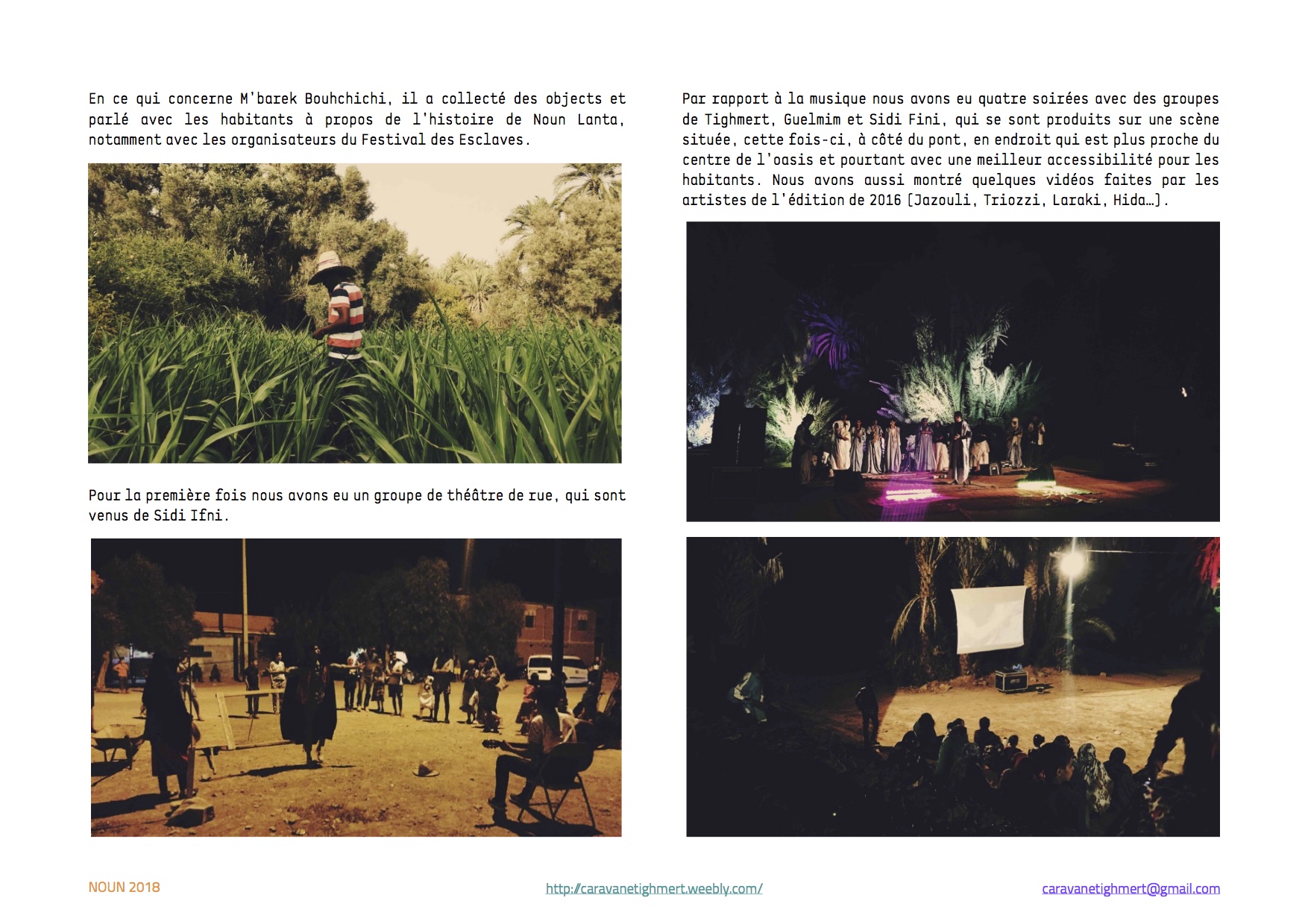
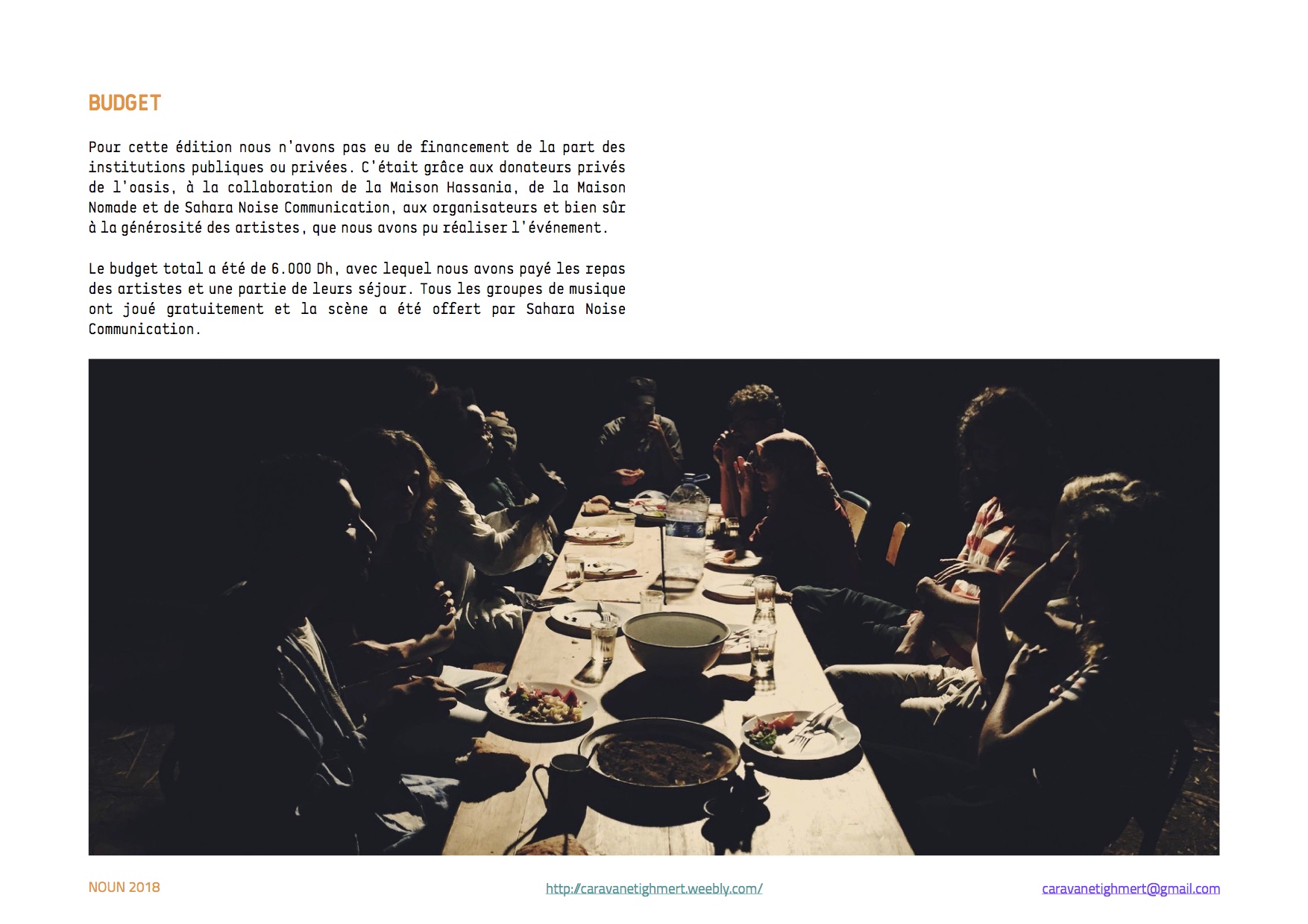
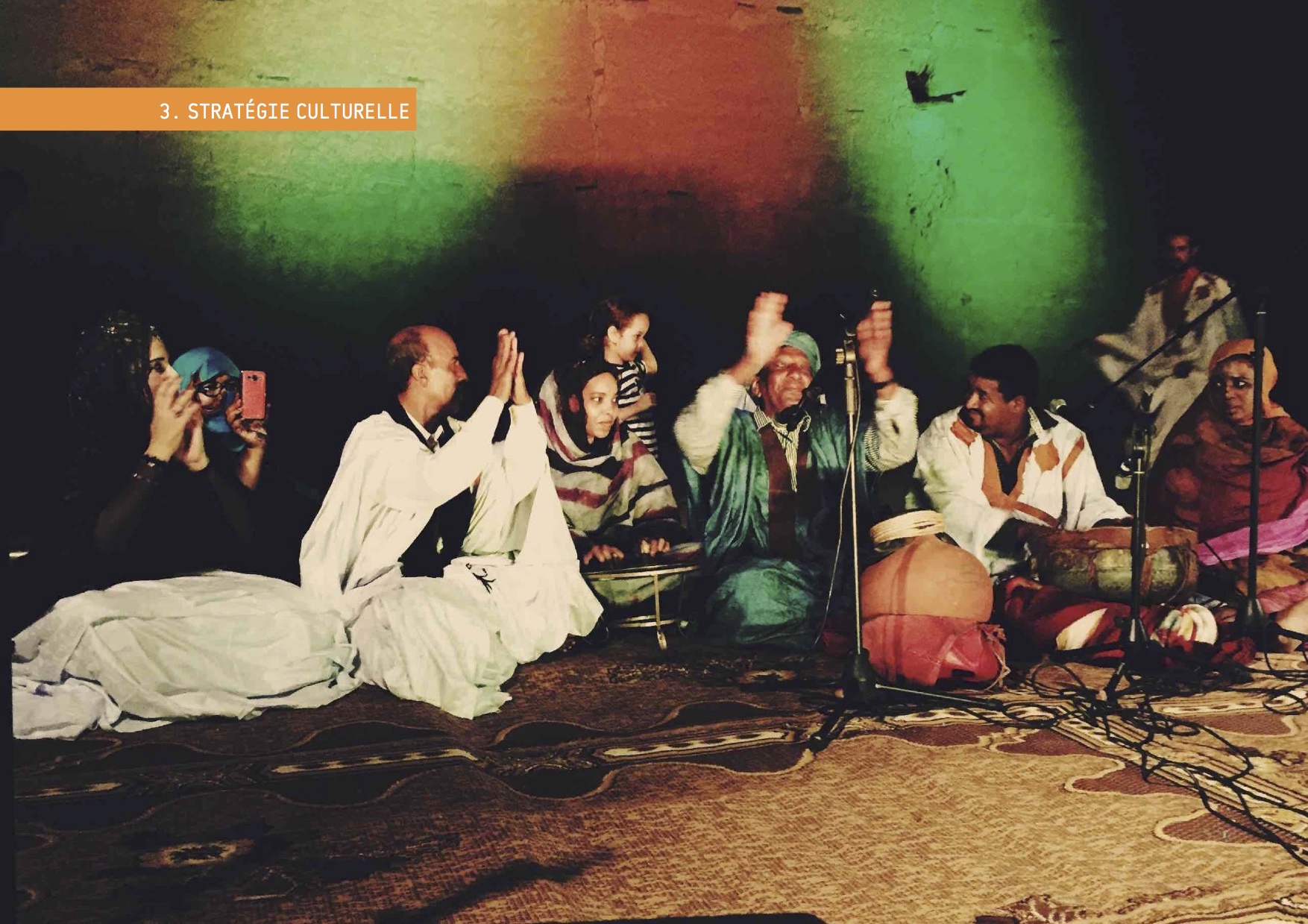
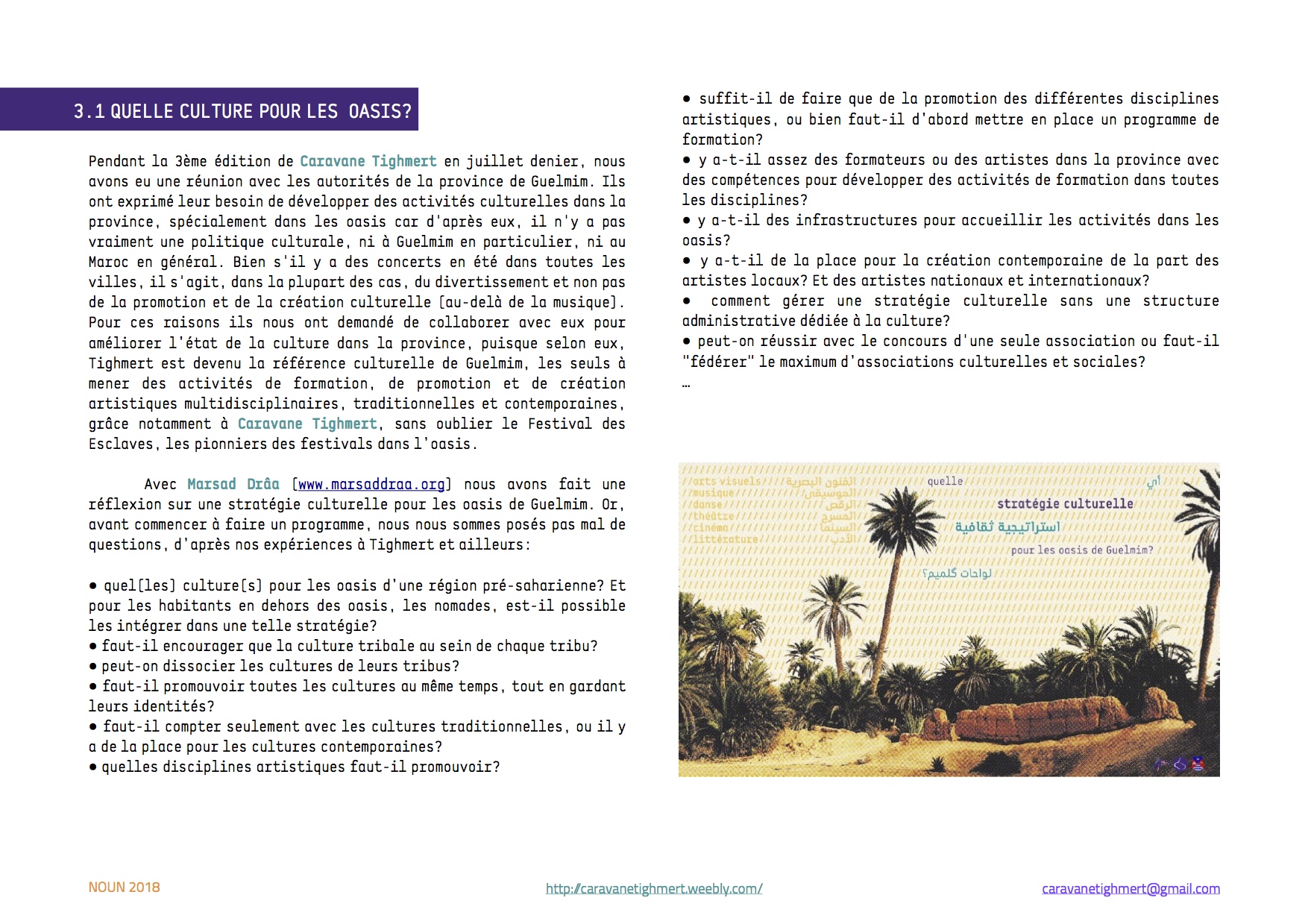
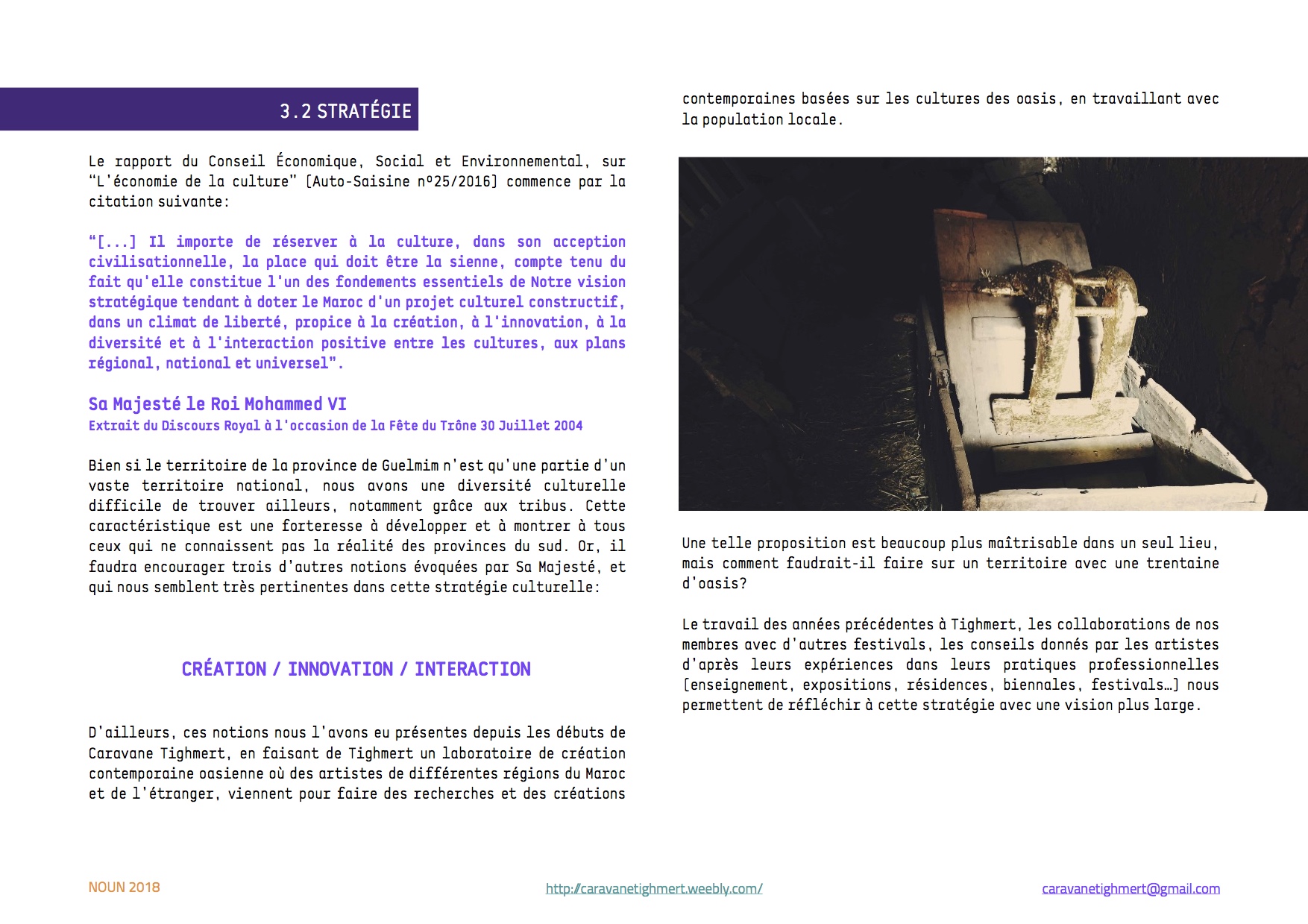
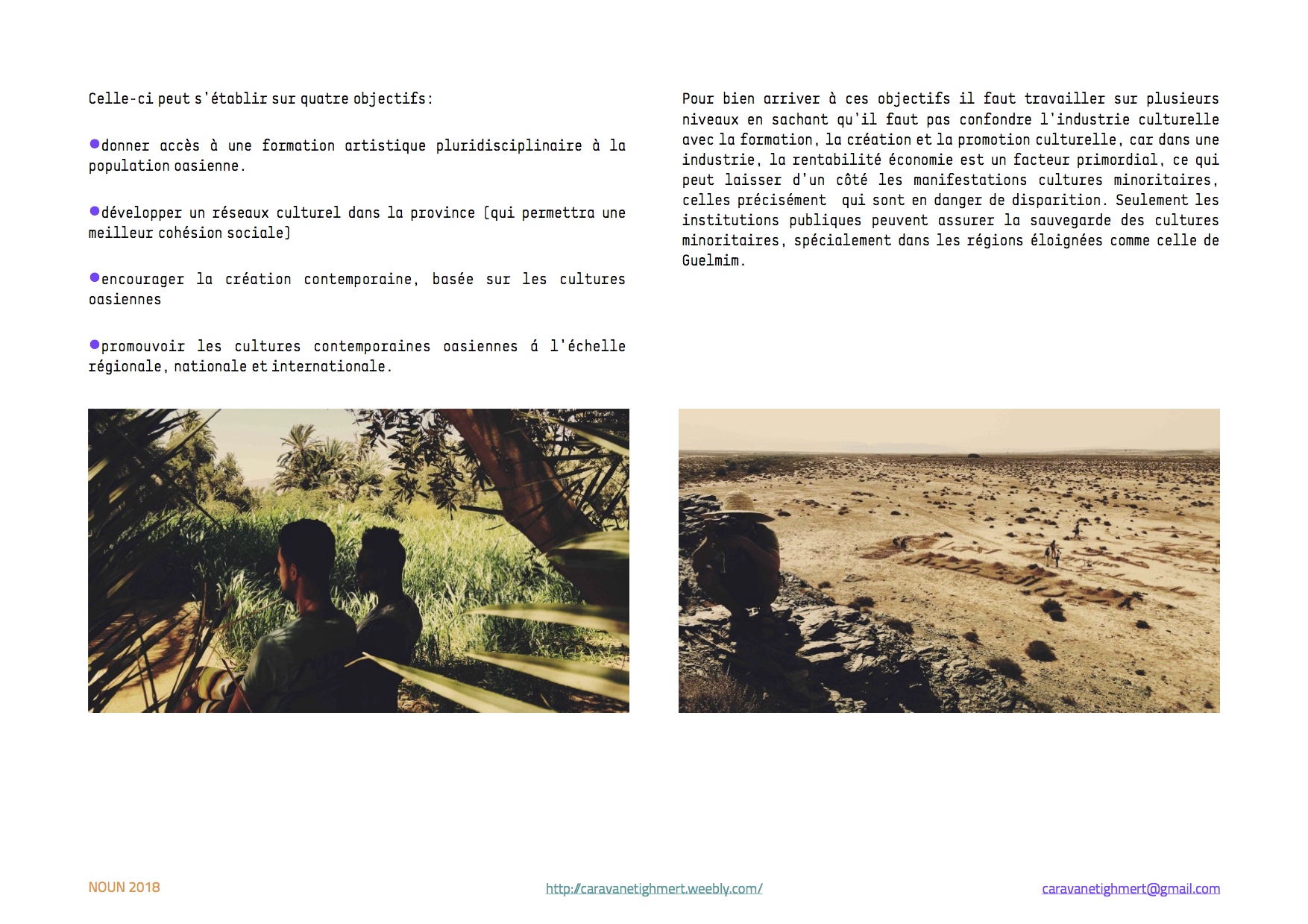

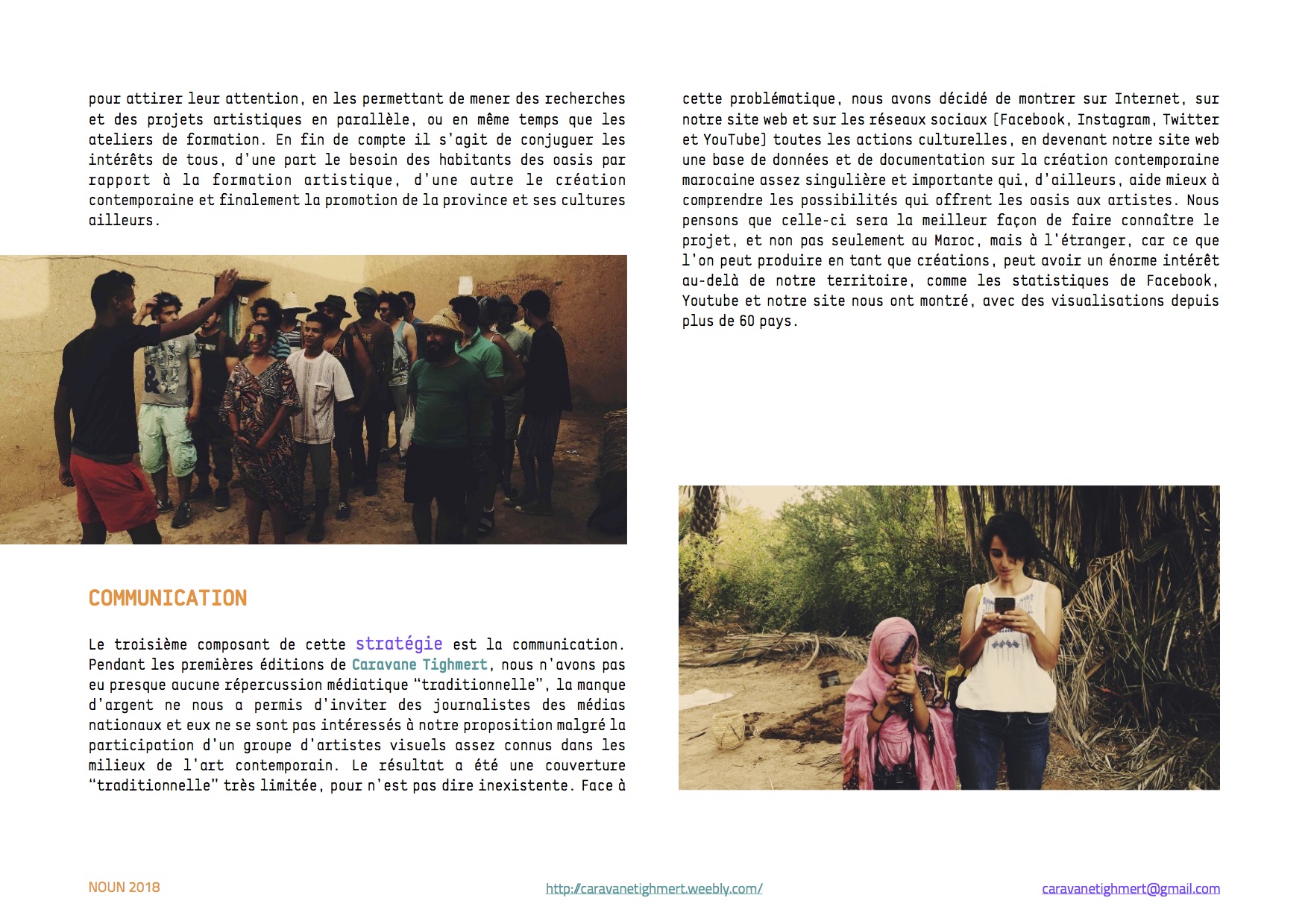


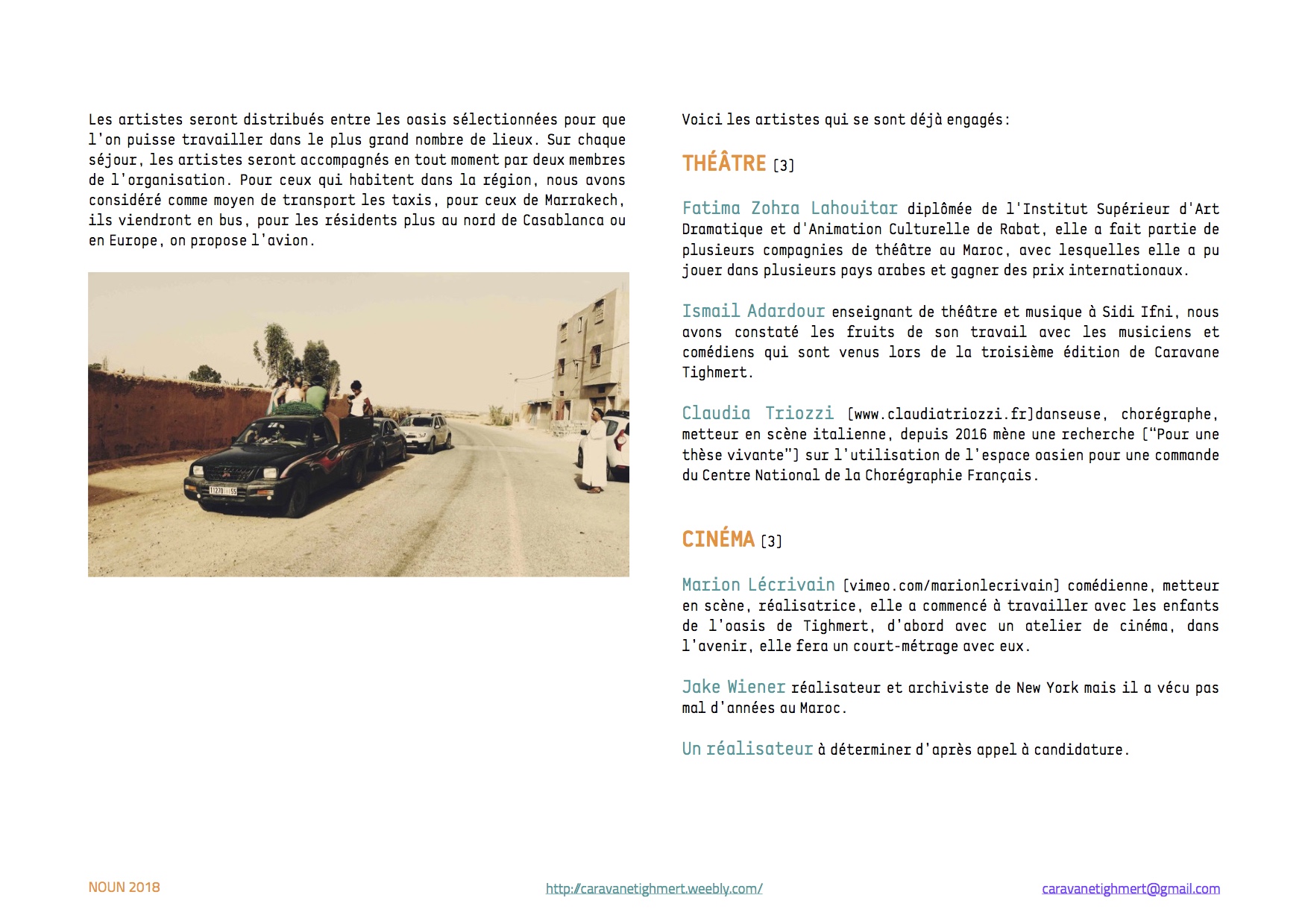
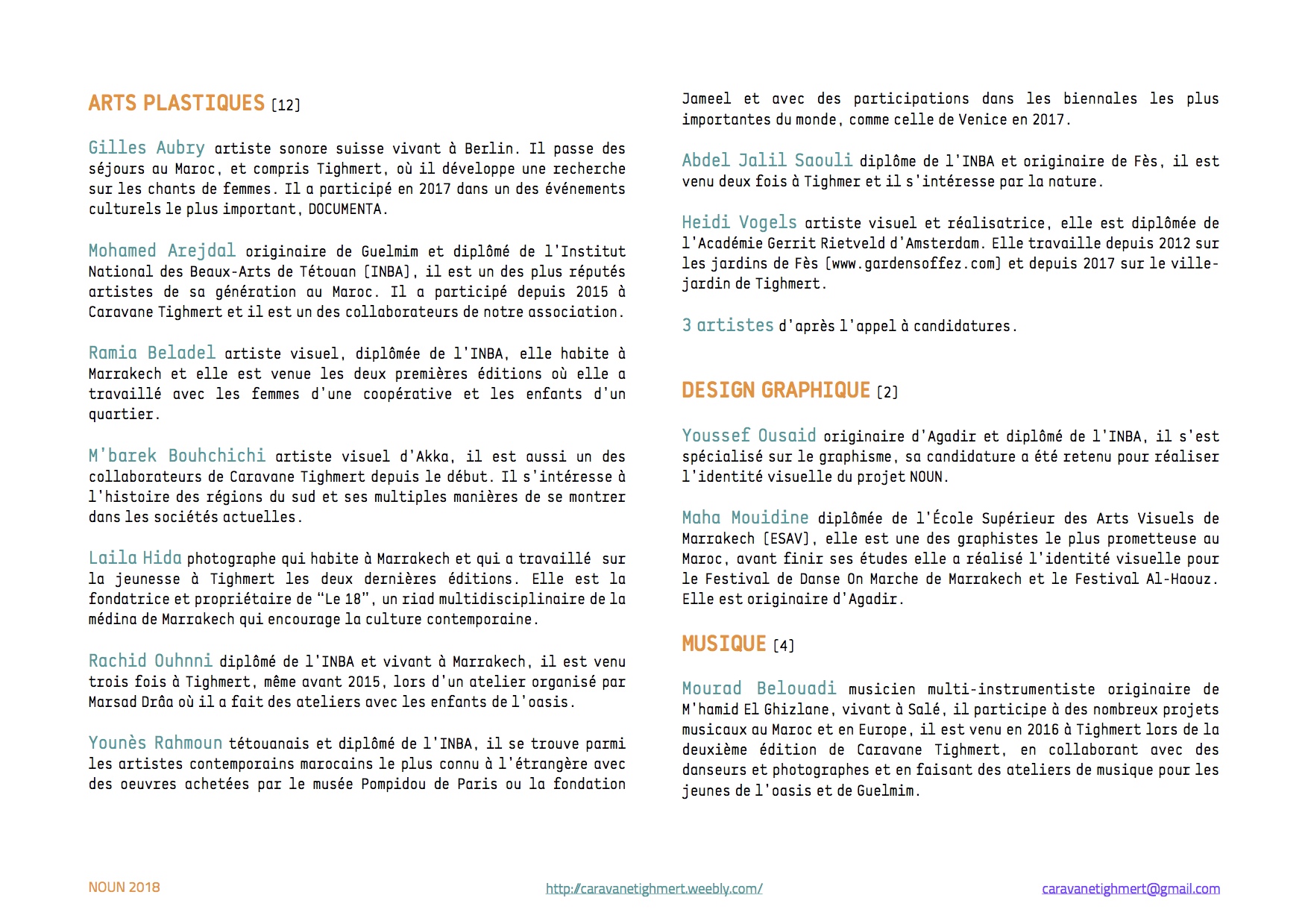
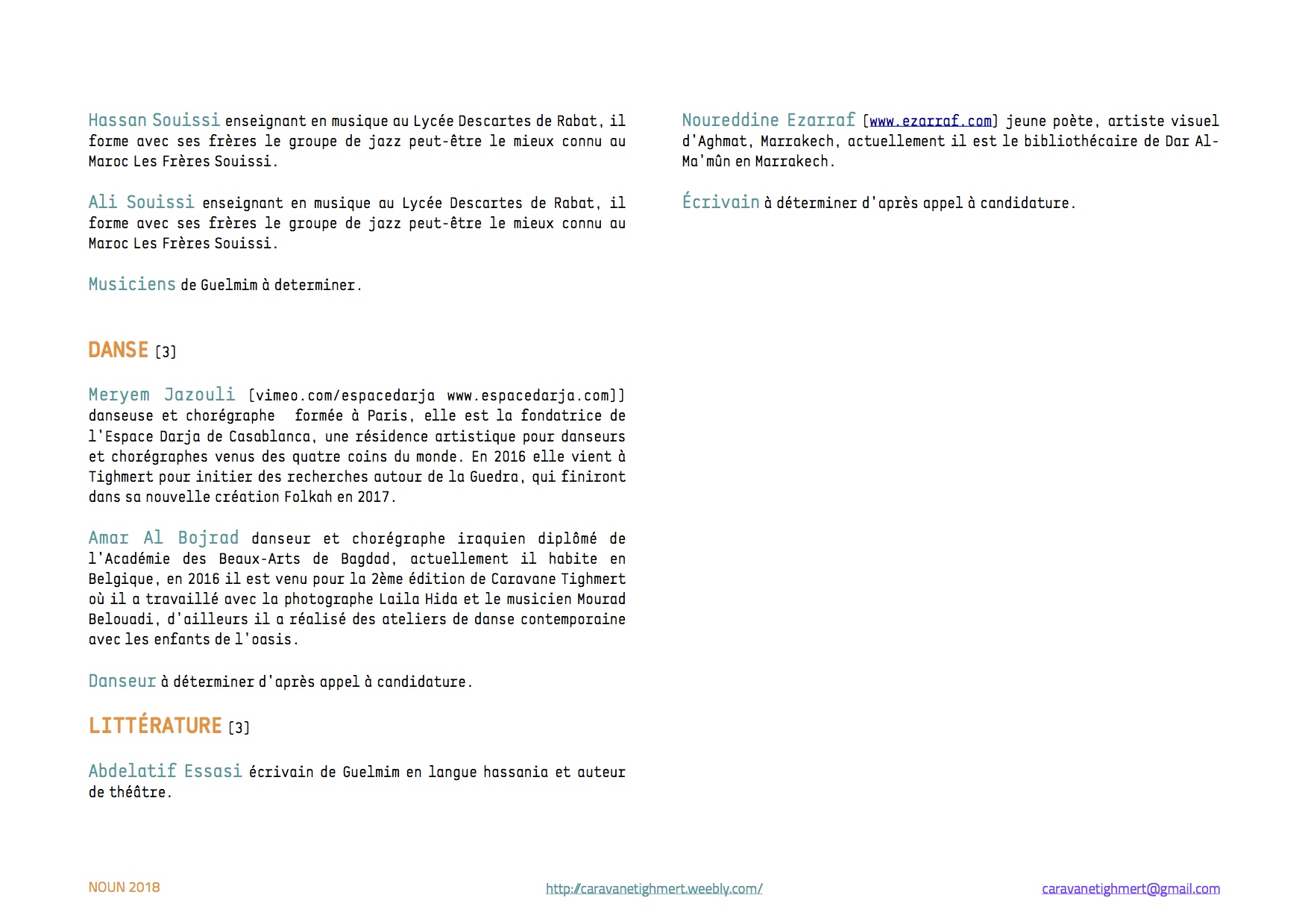
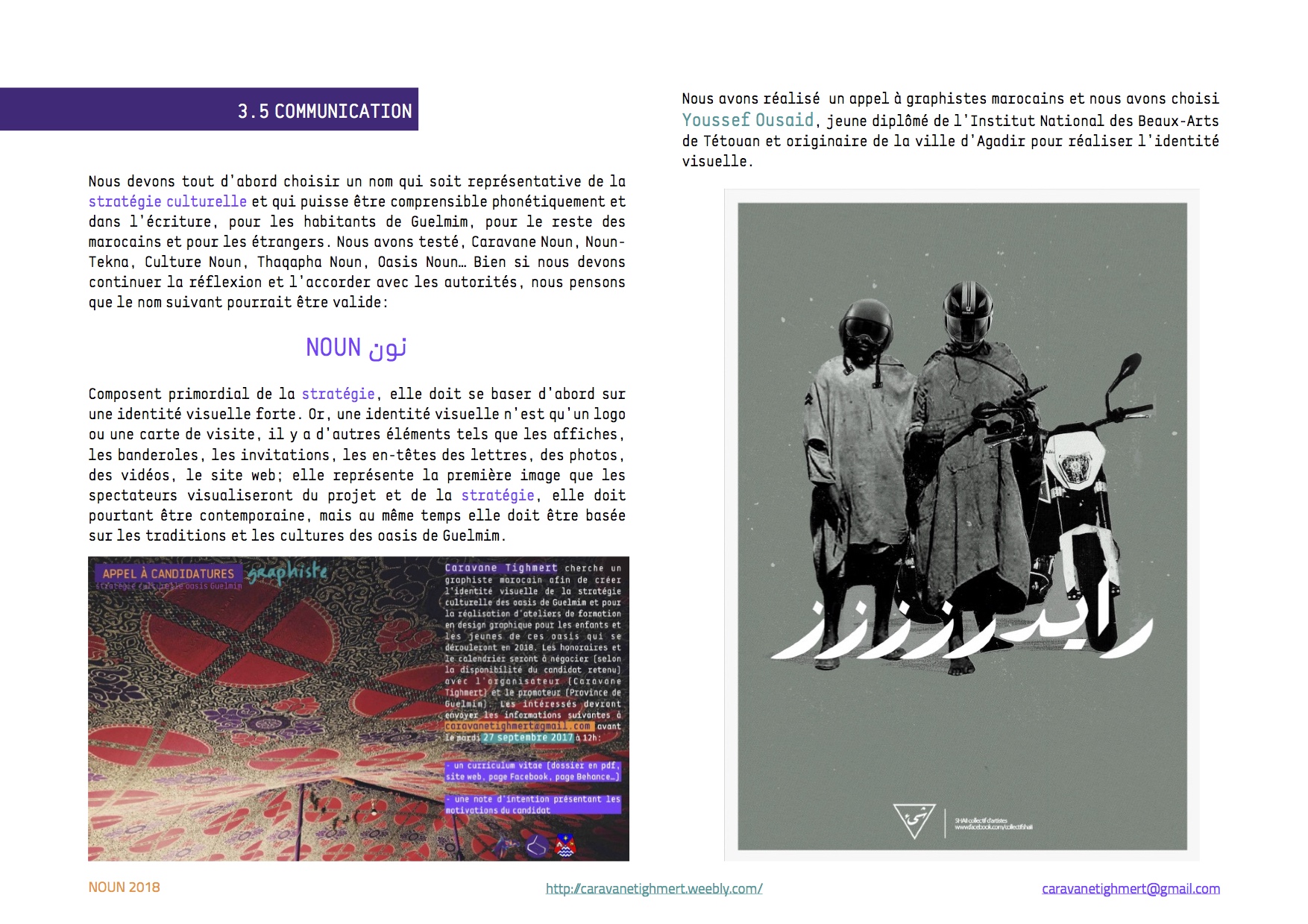
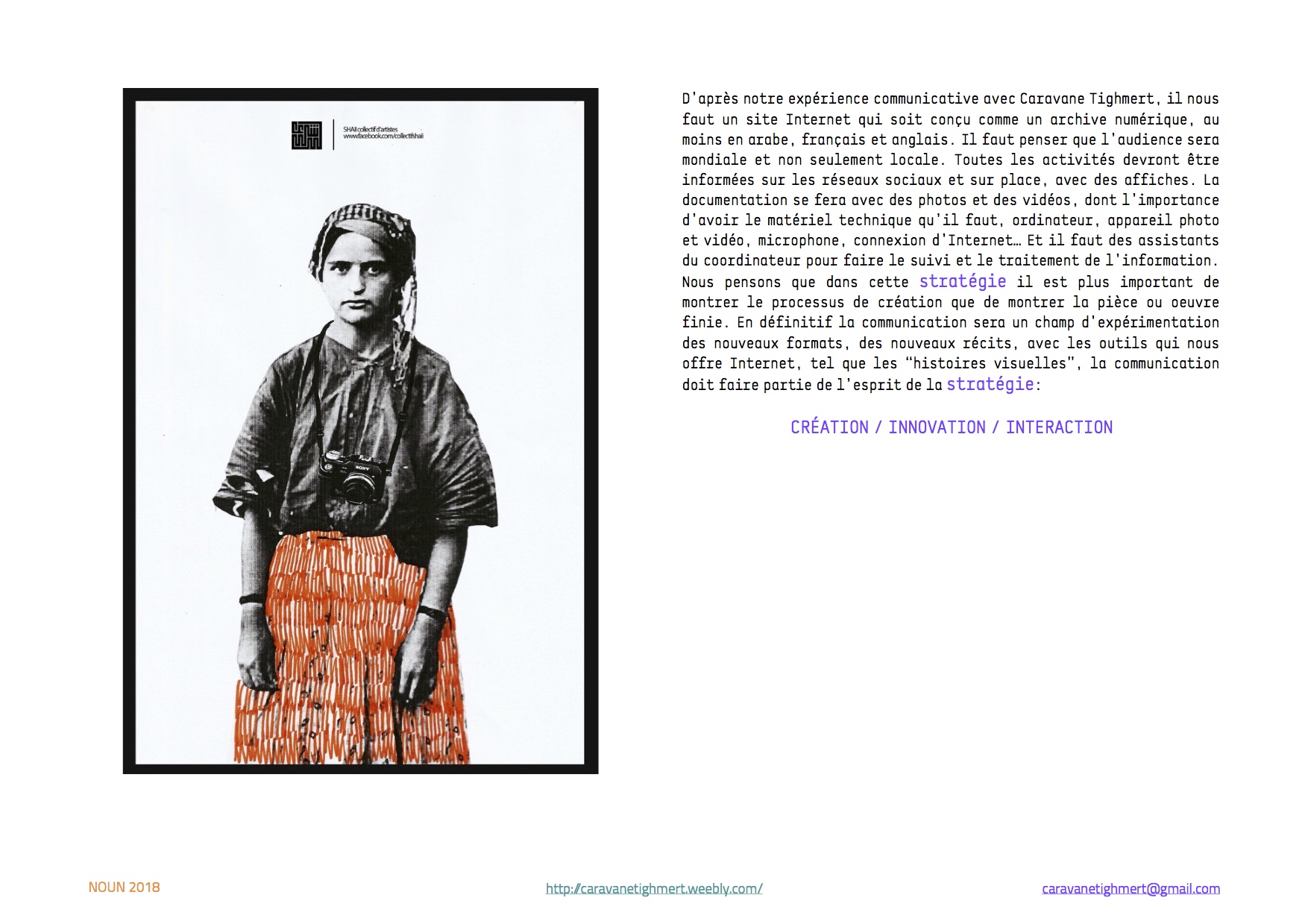
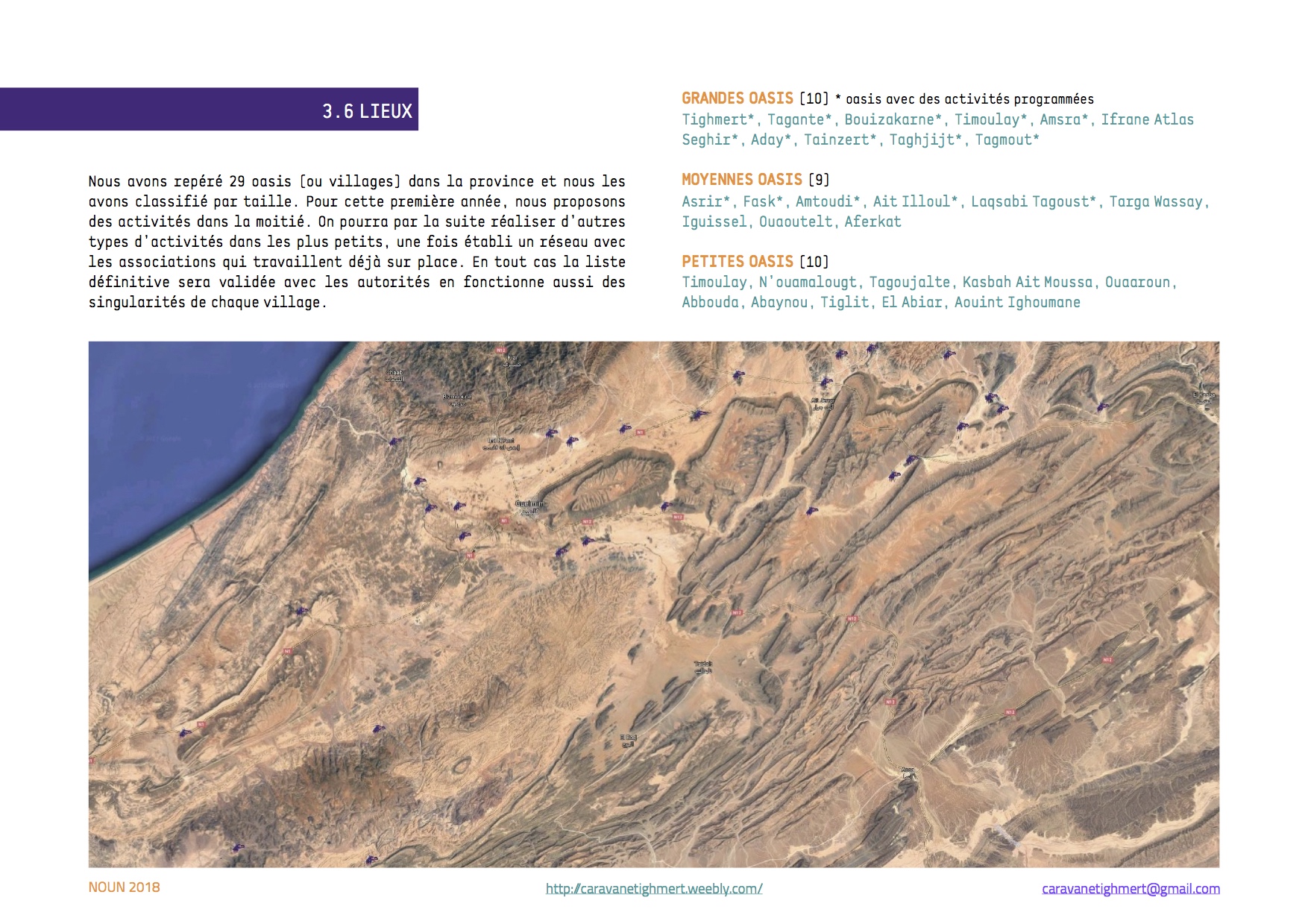

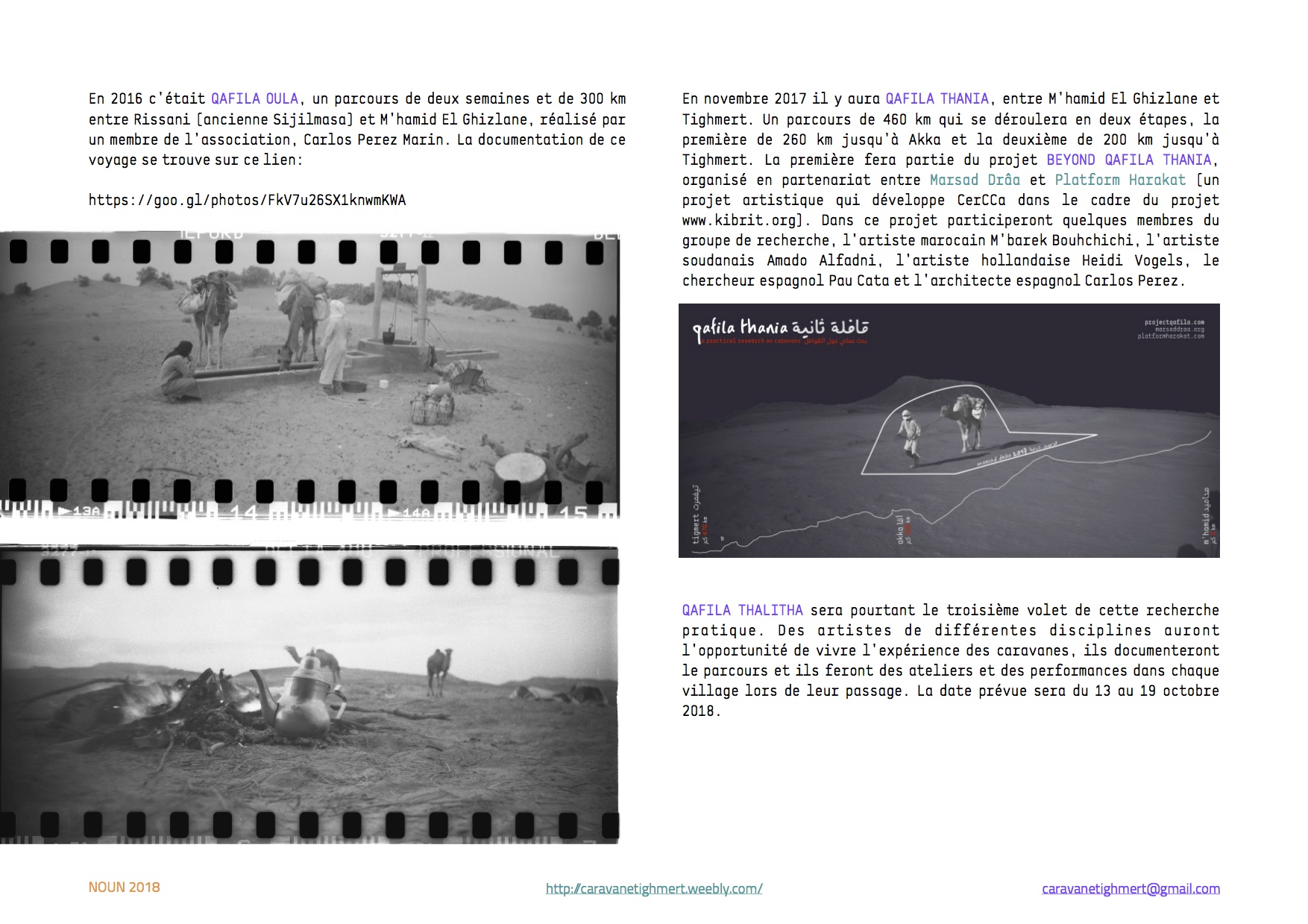

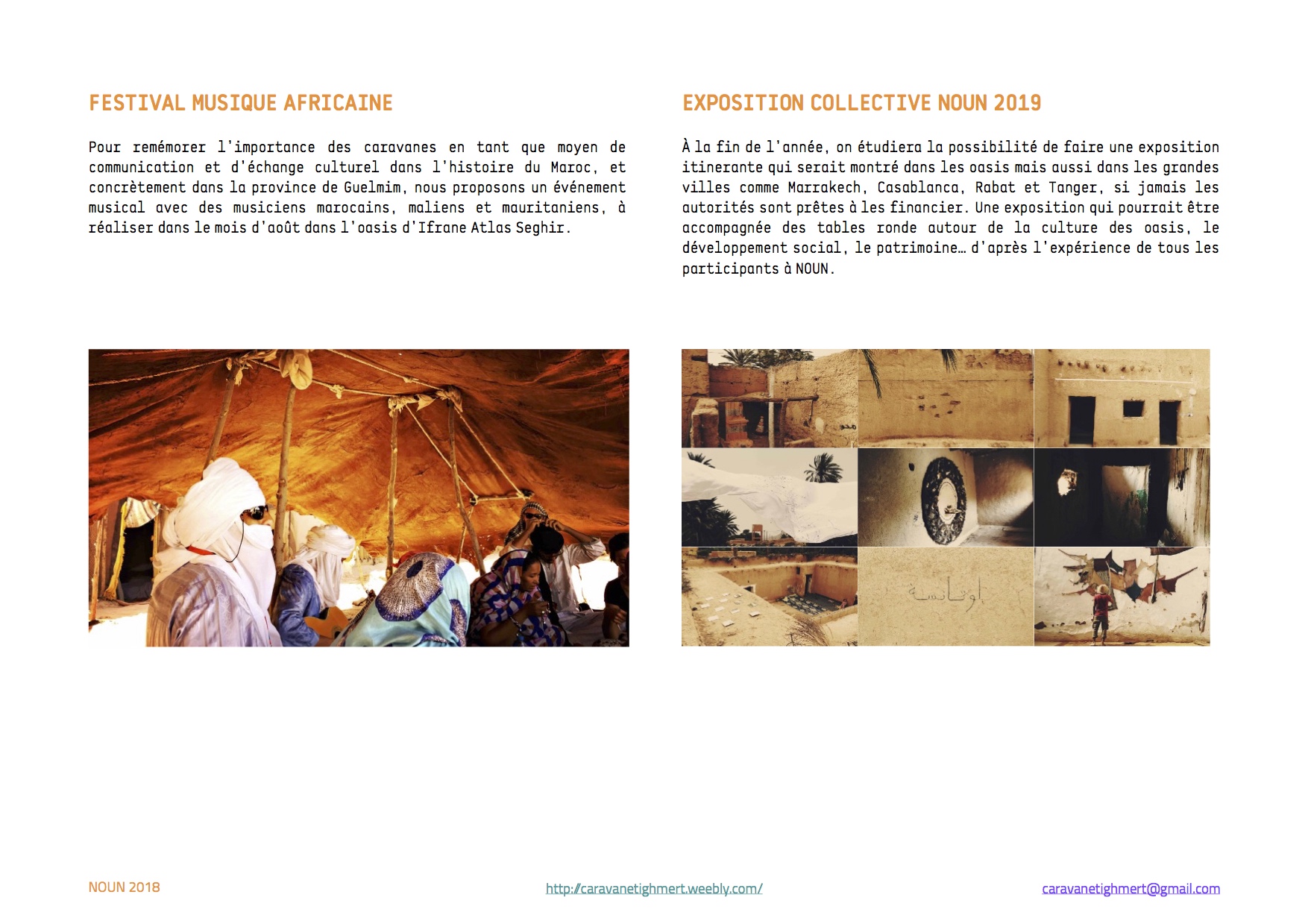
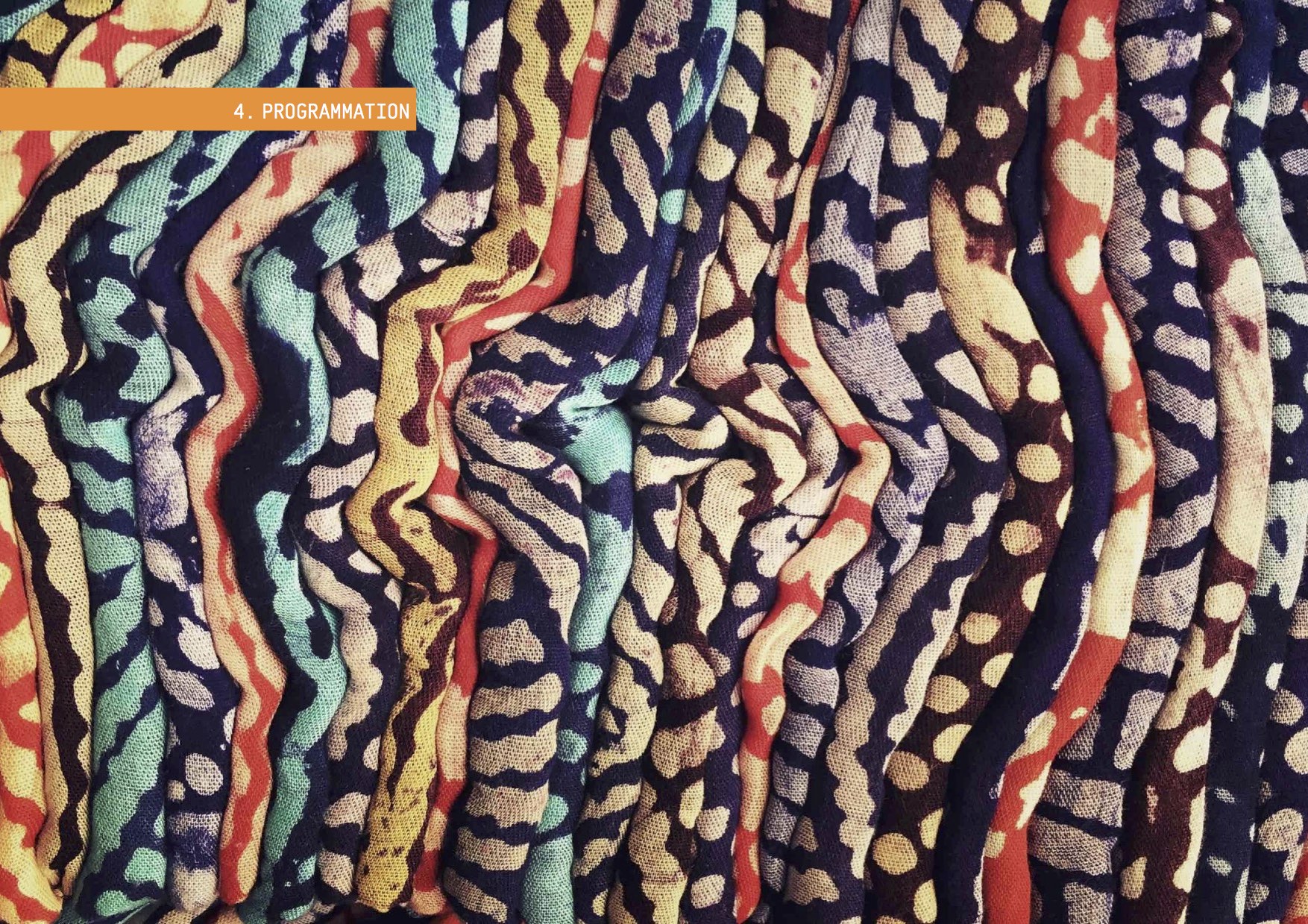


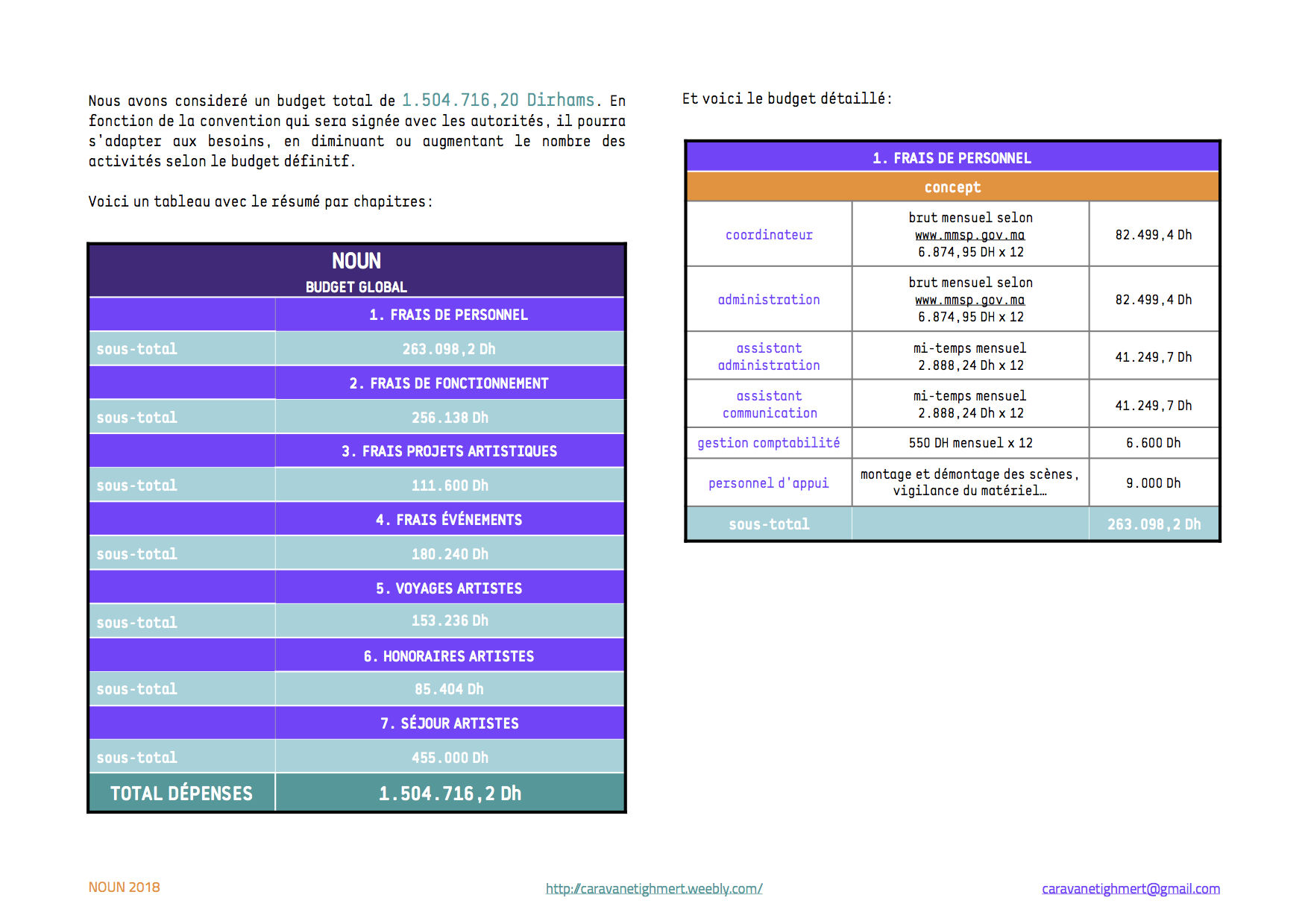

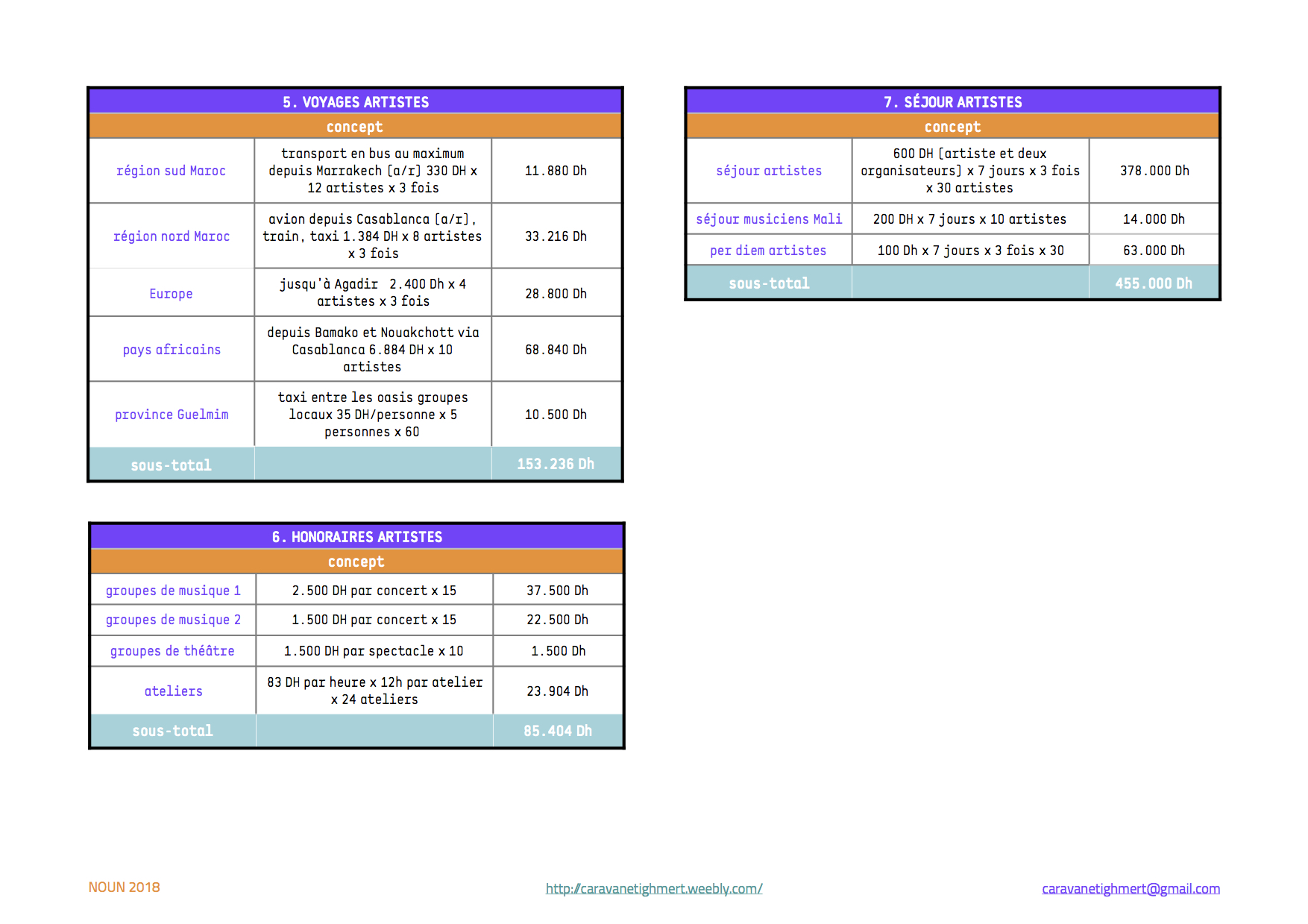
We had a meeting in November 2017 with the authorities and they assured us they still wanted to carry out the strategy, but they had to involve other institutions to raise more money. We are still waiting...